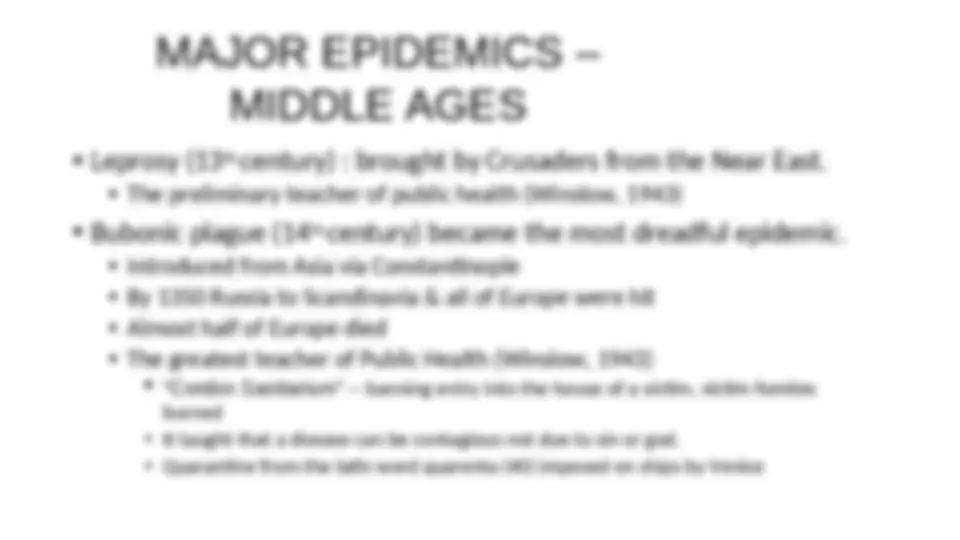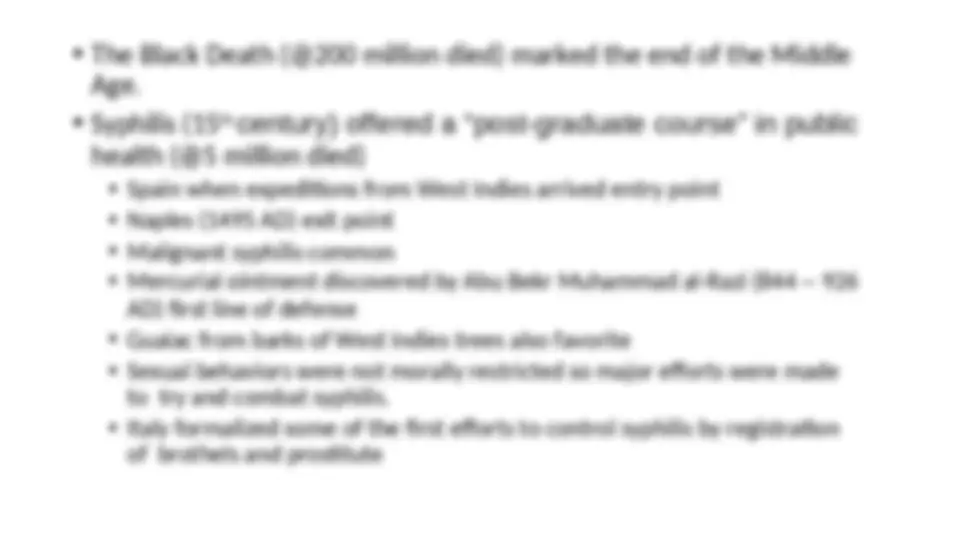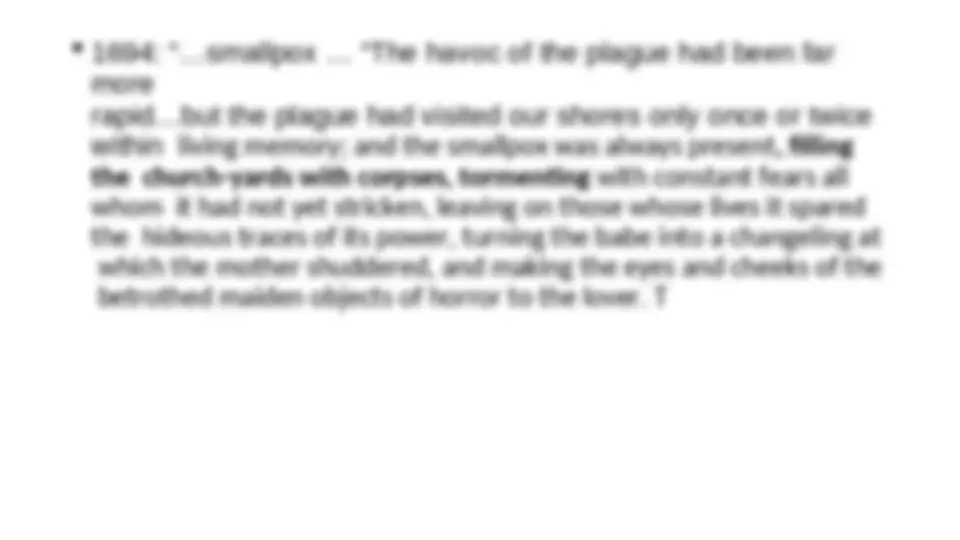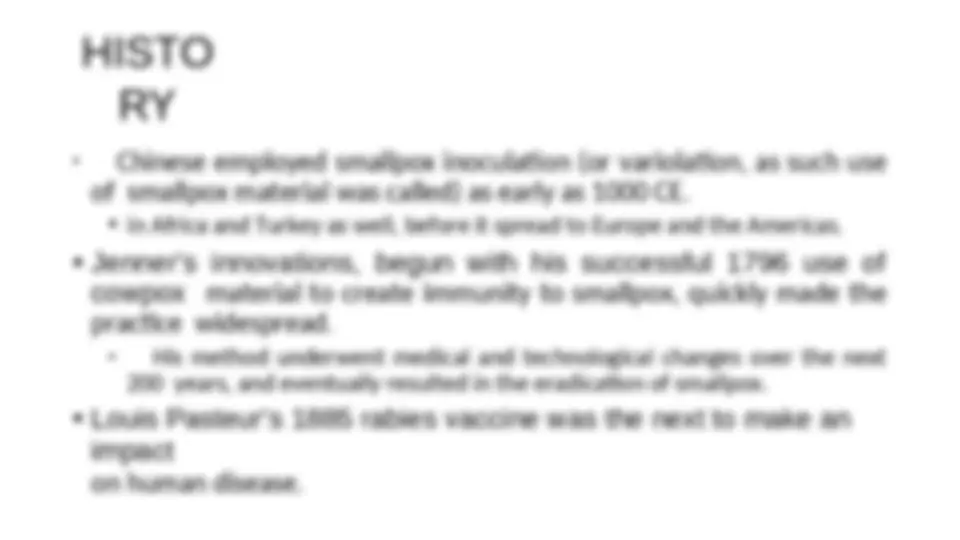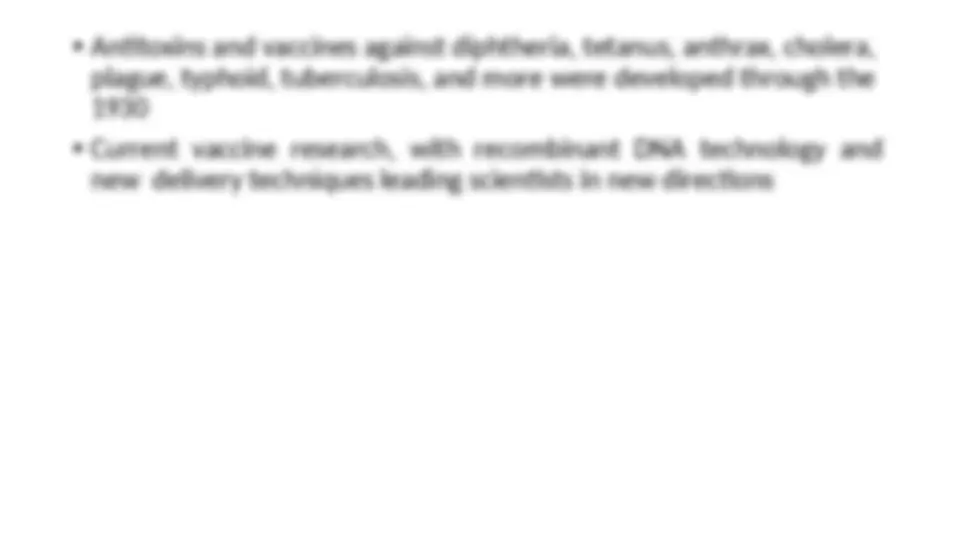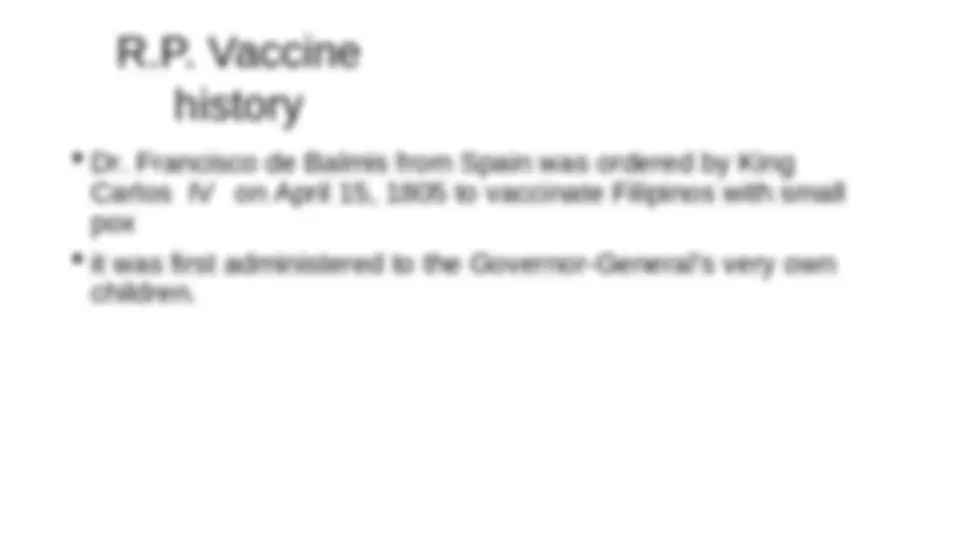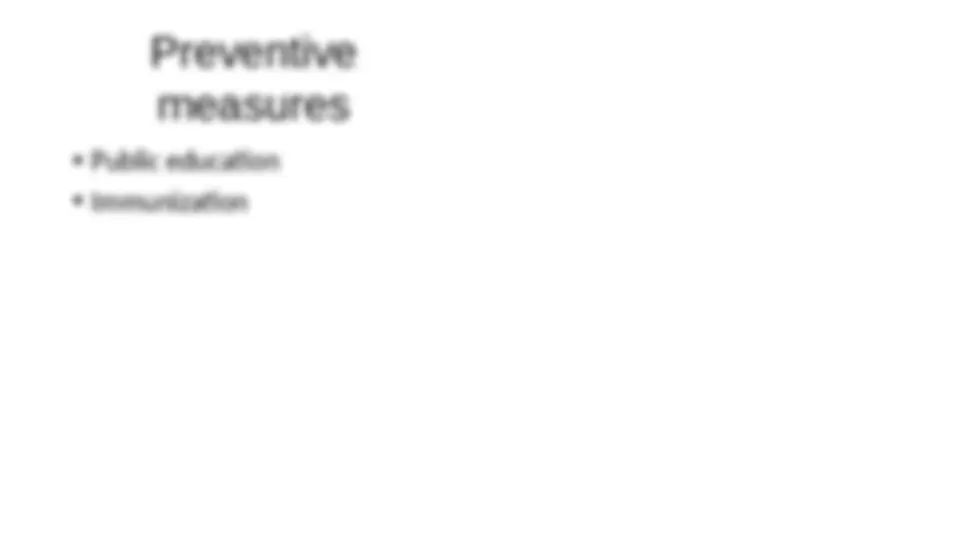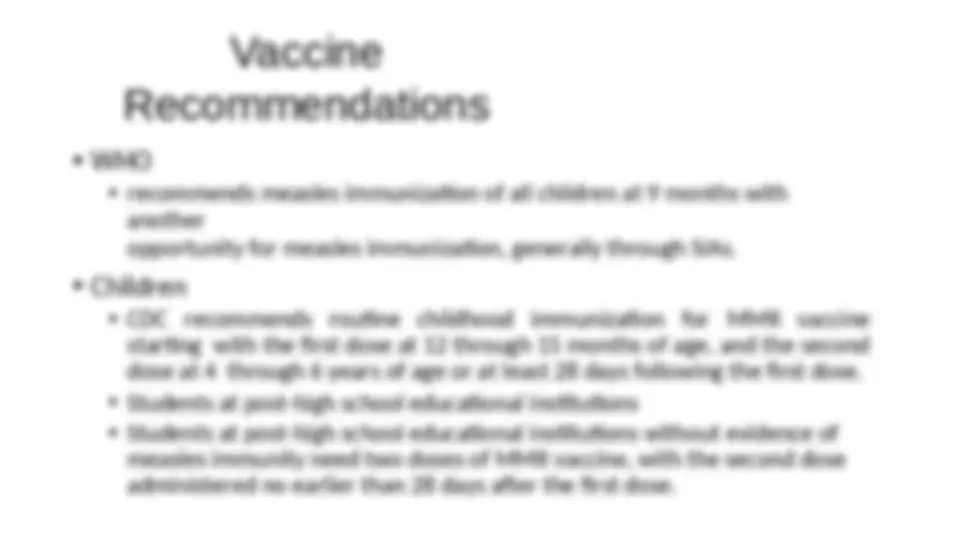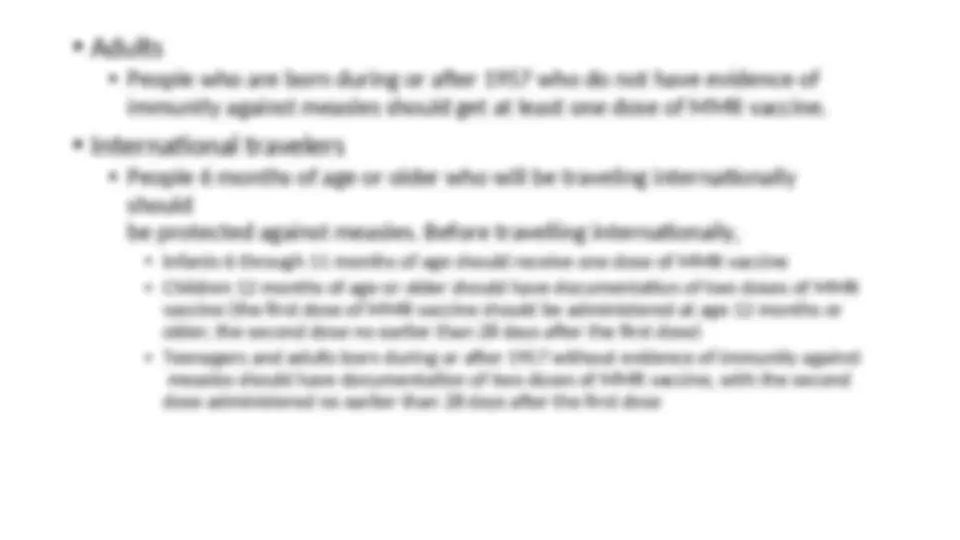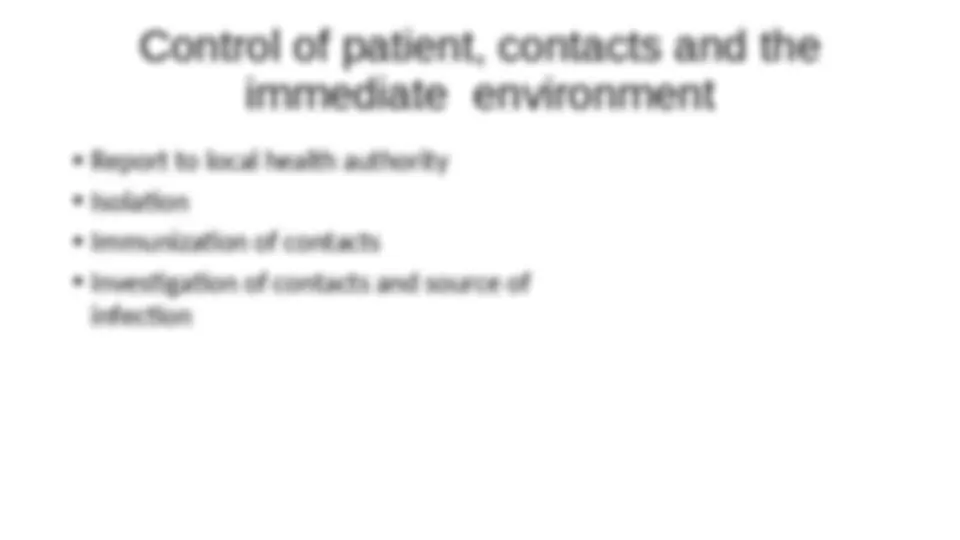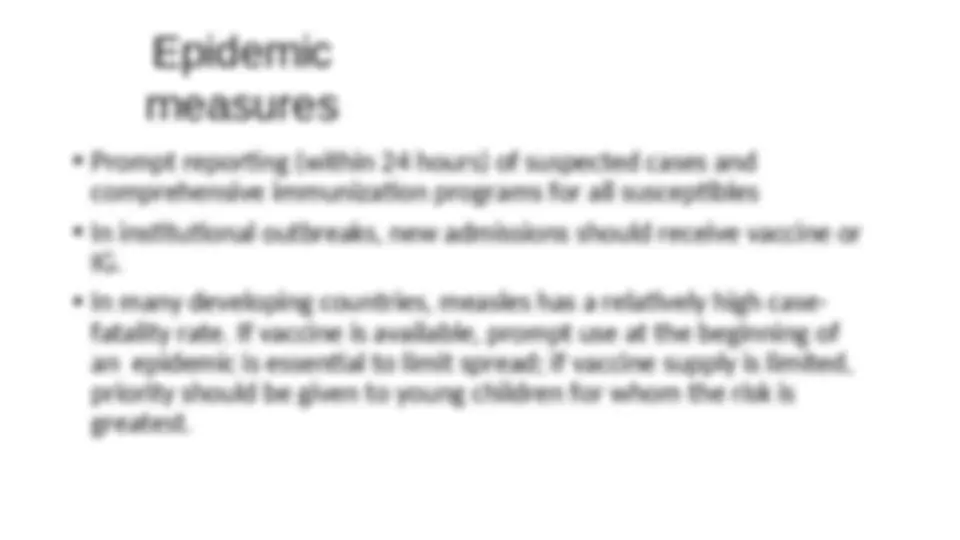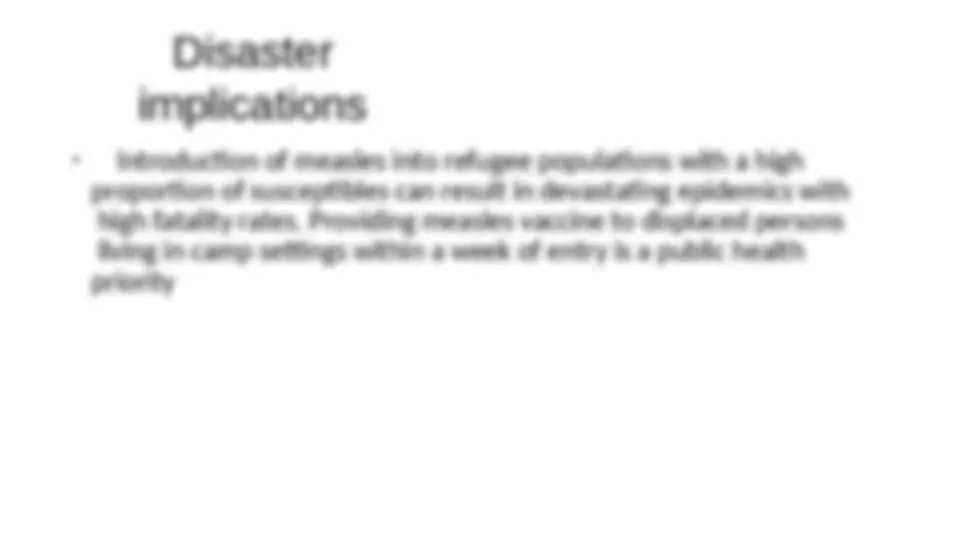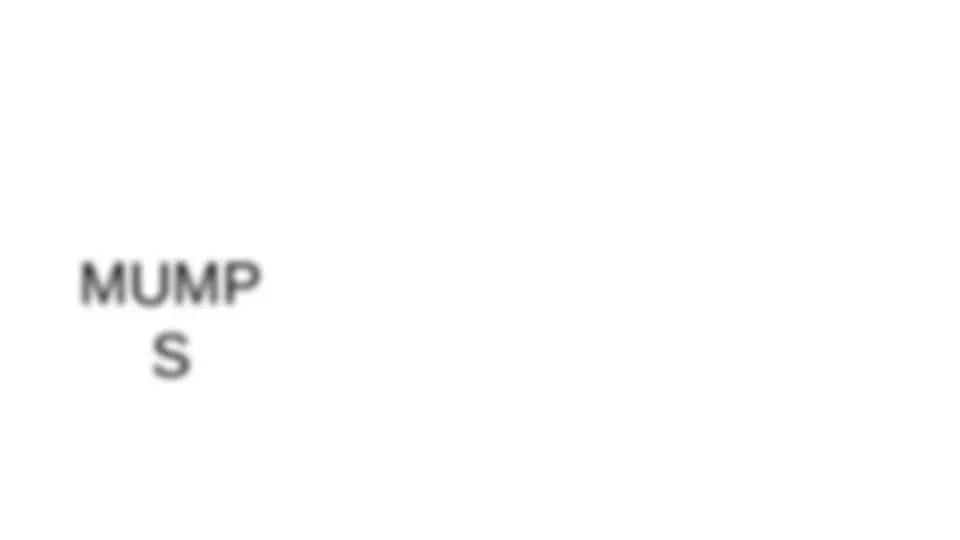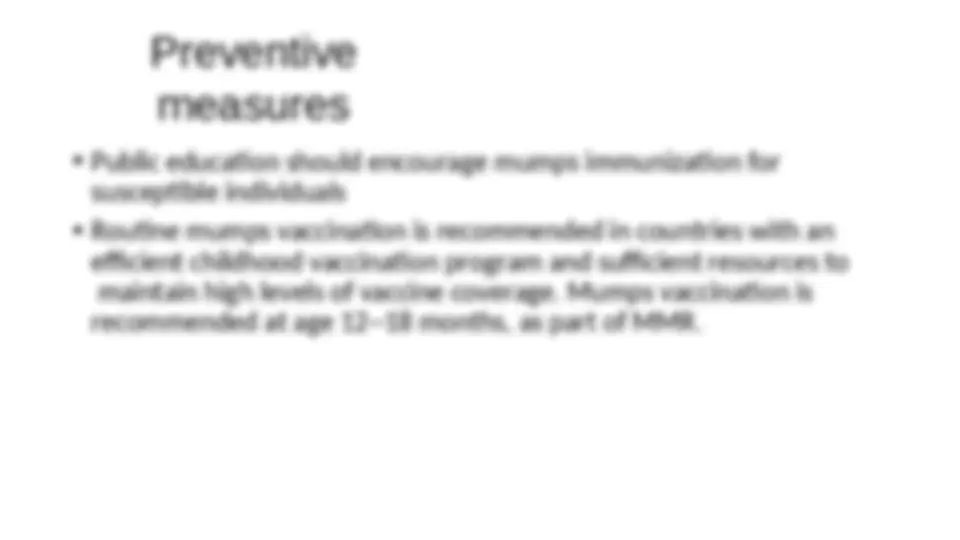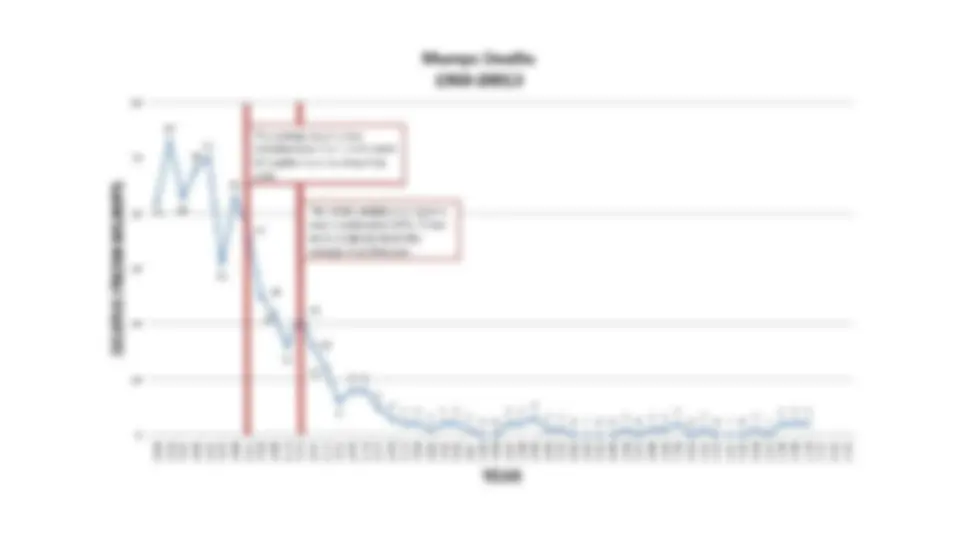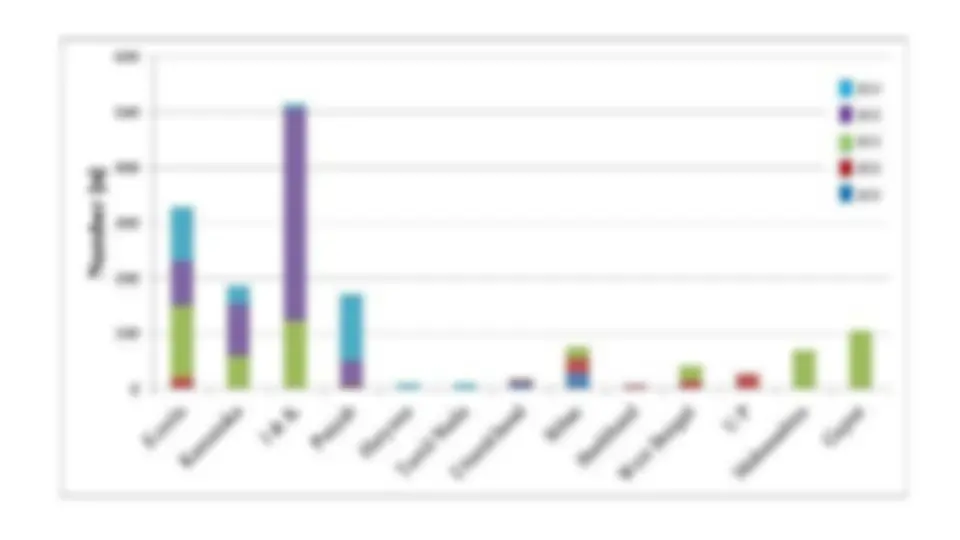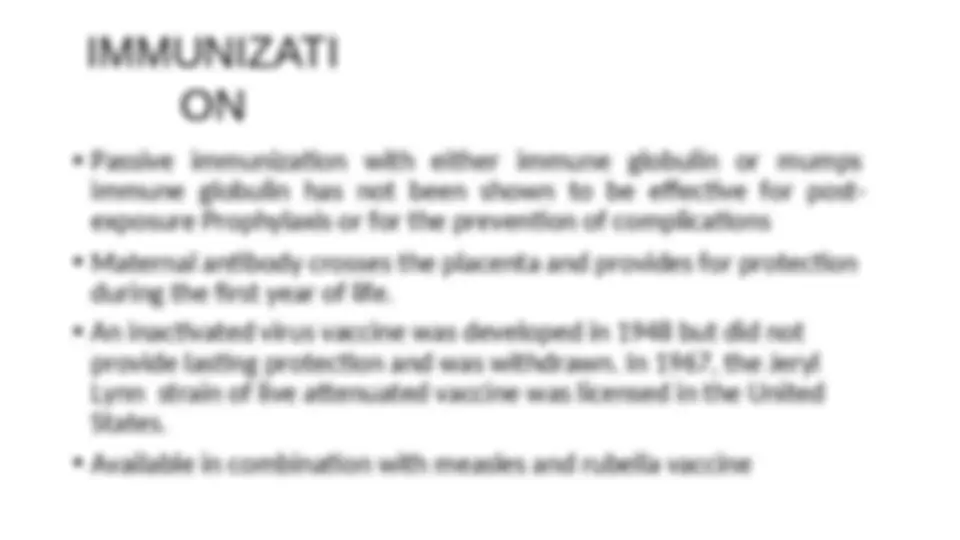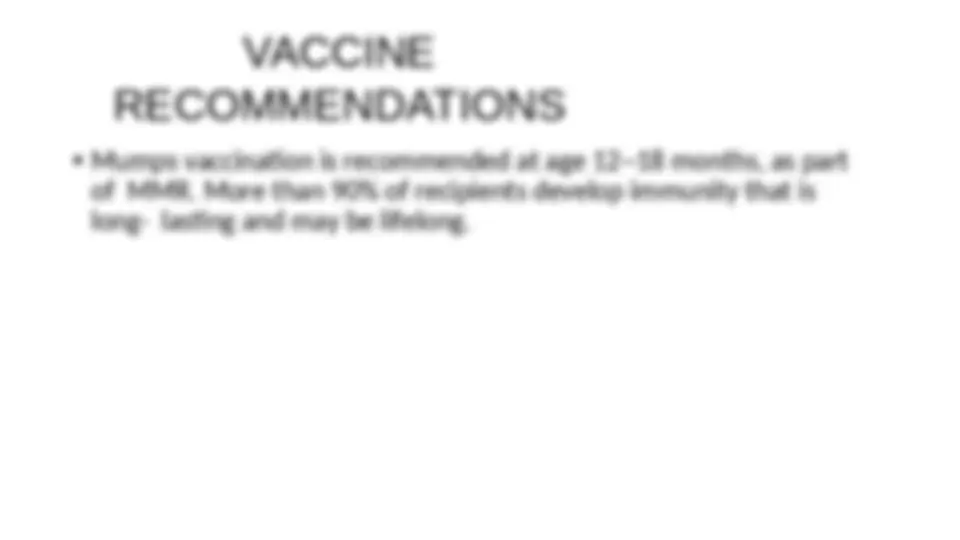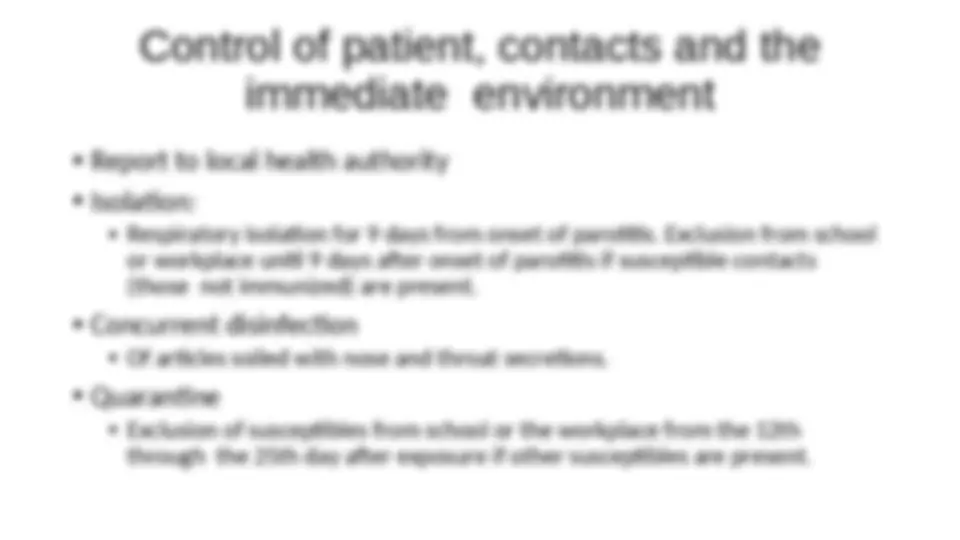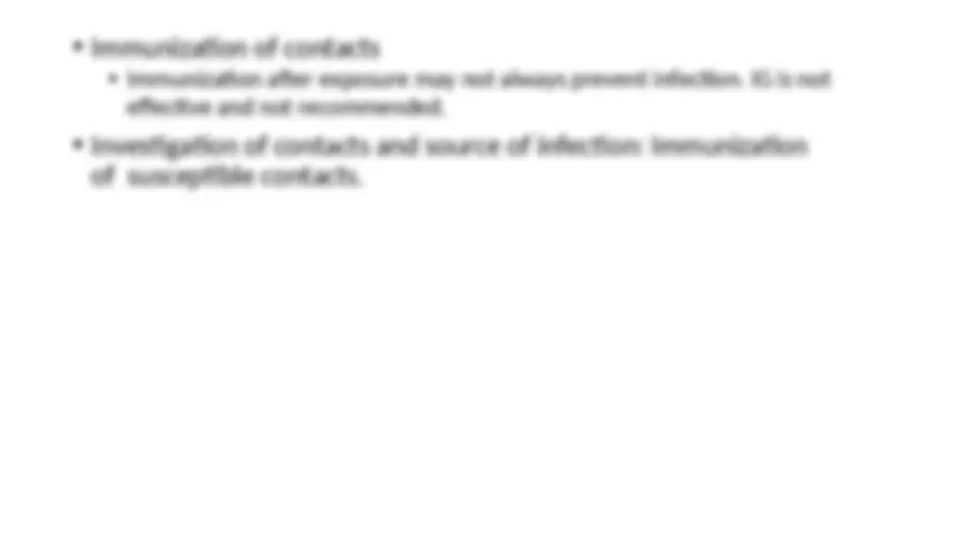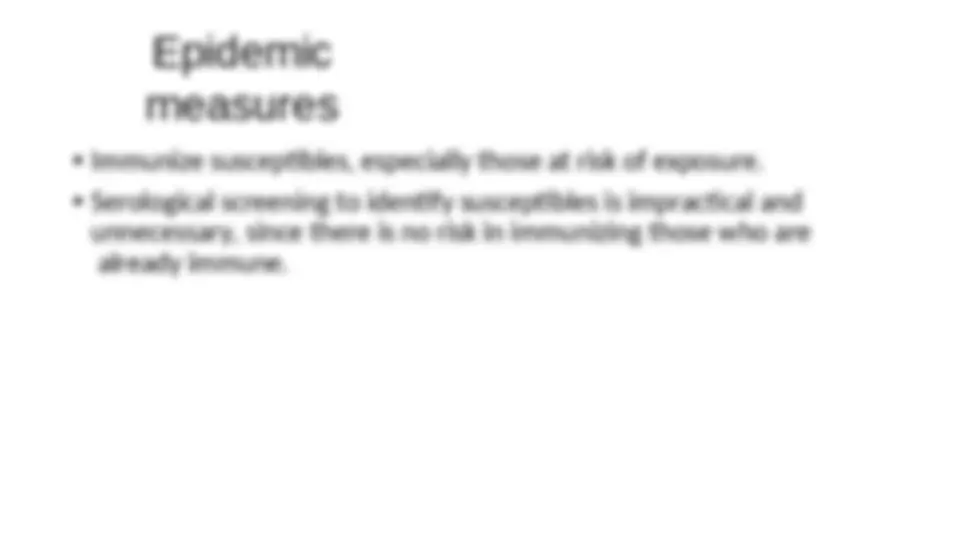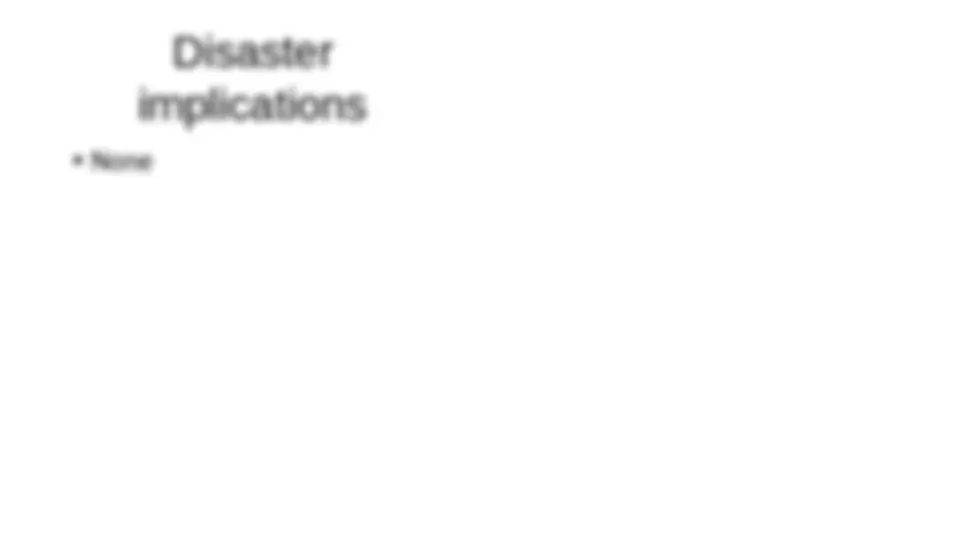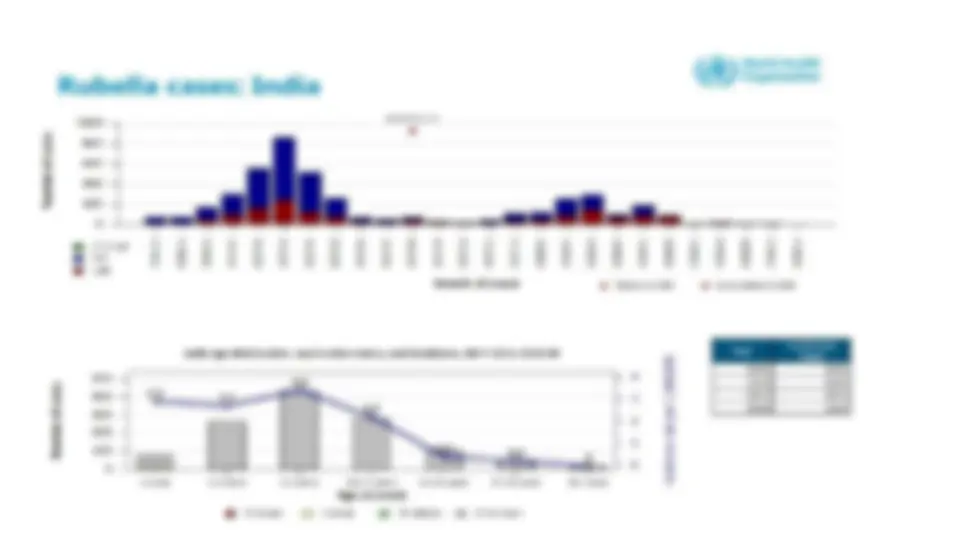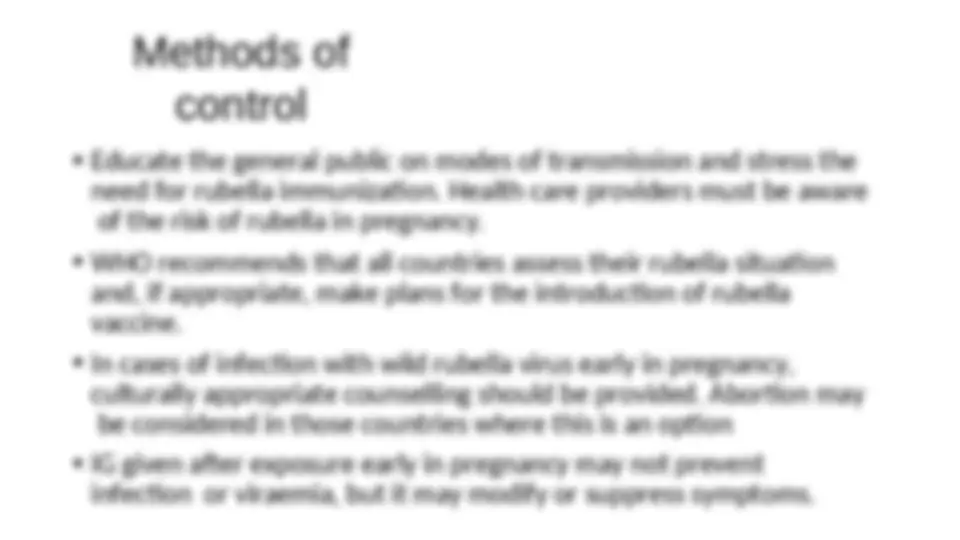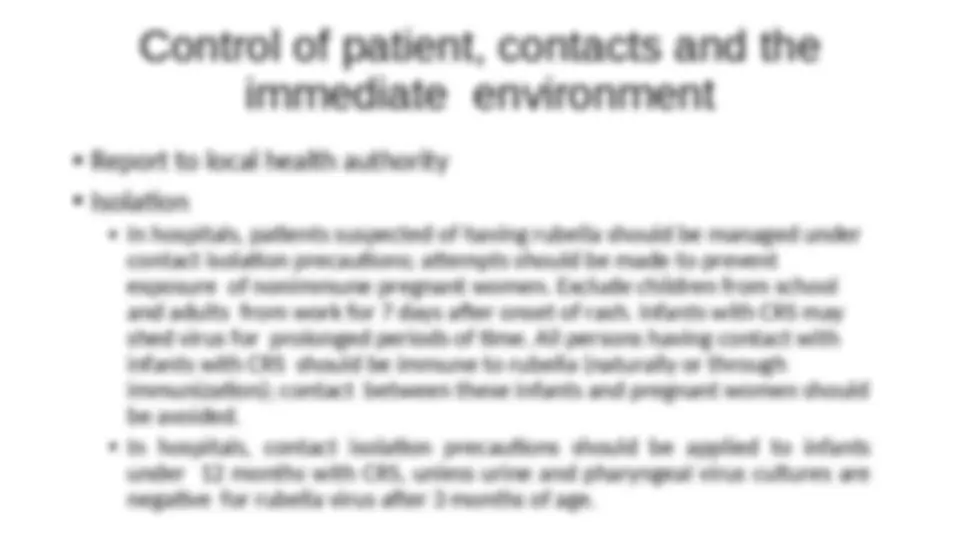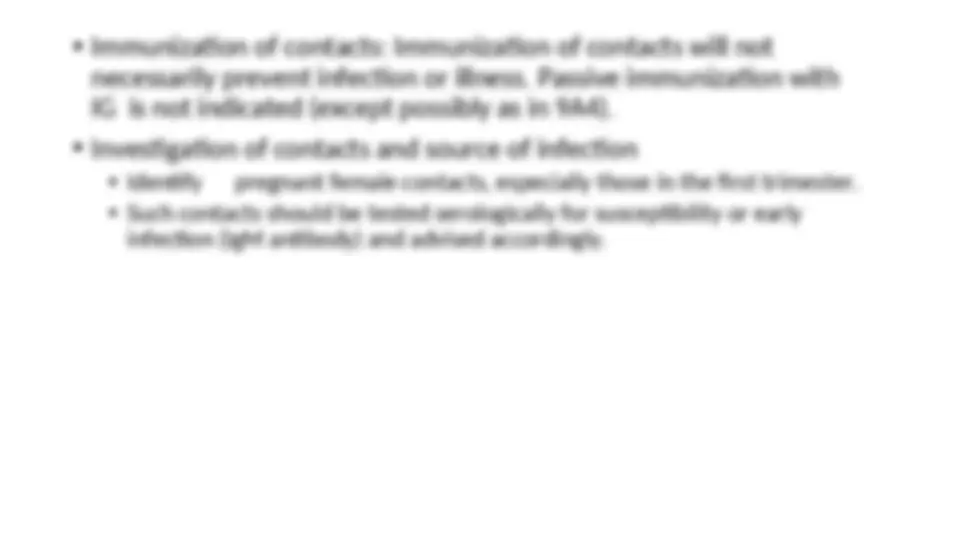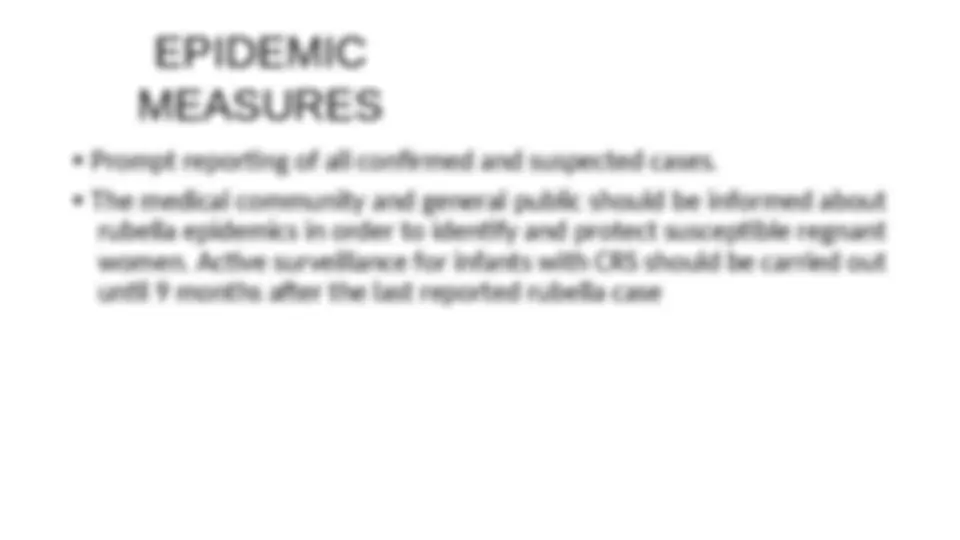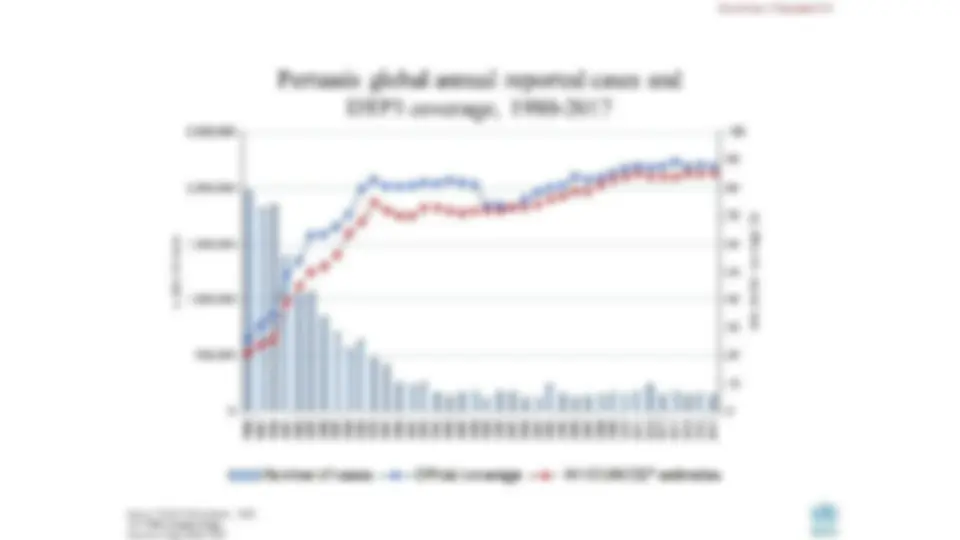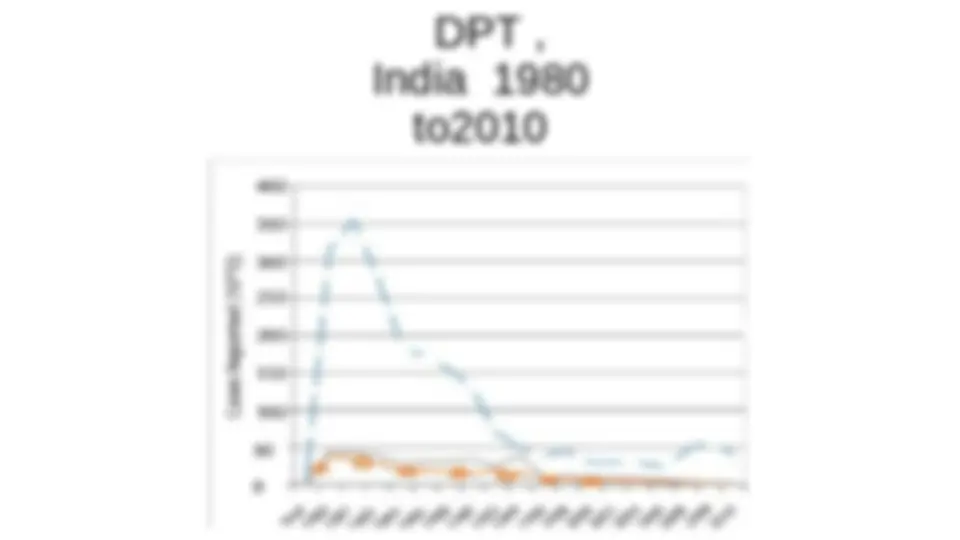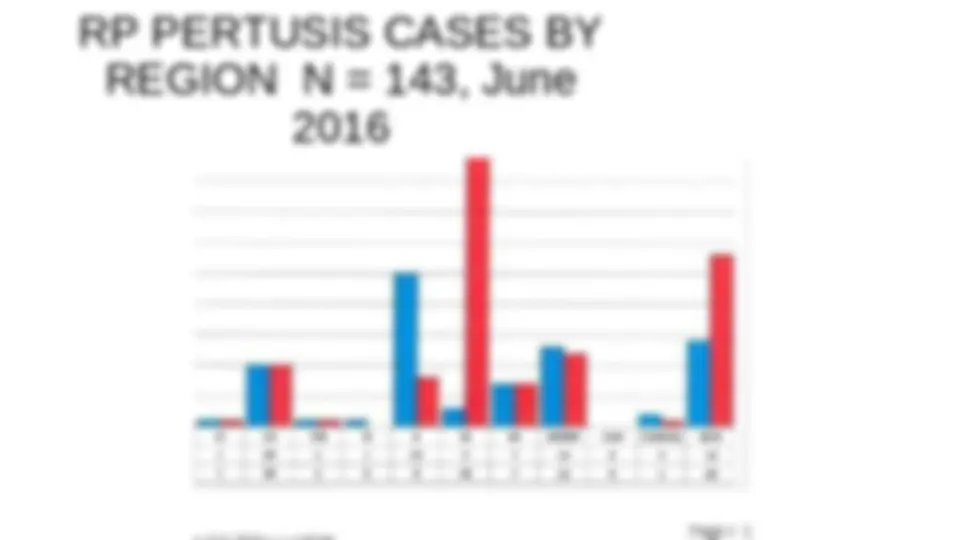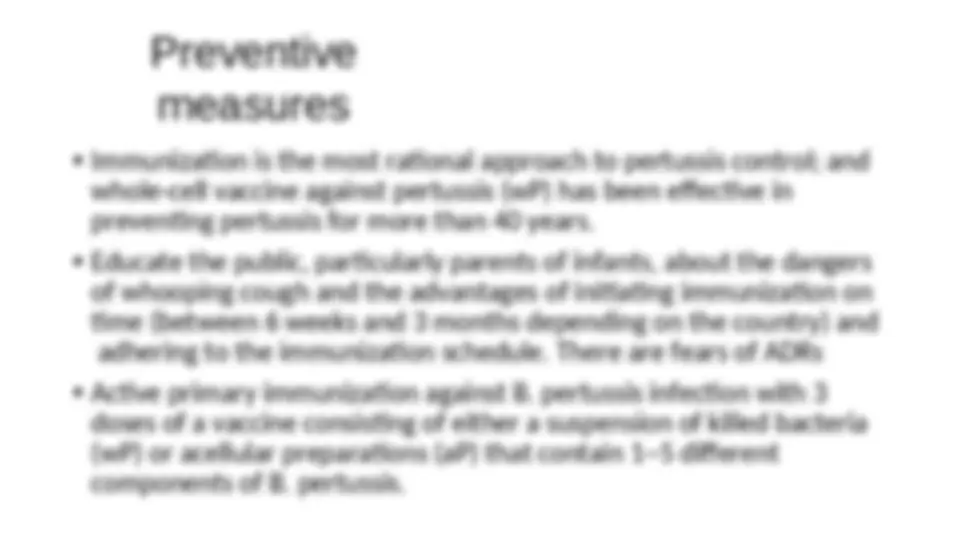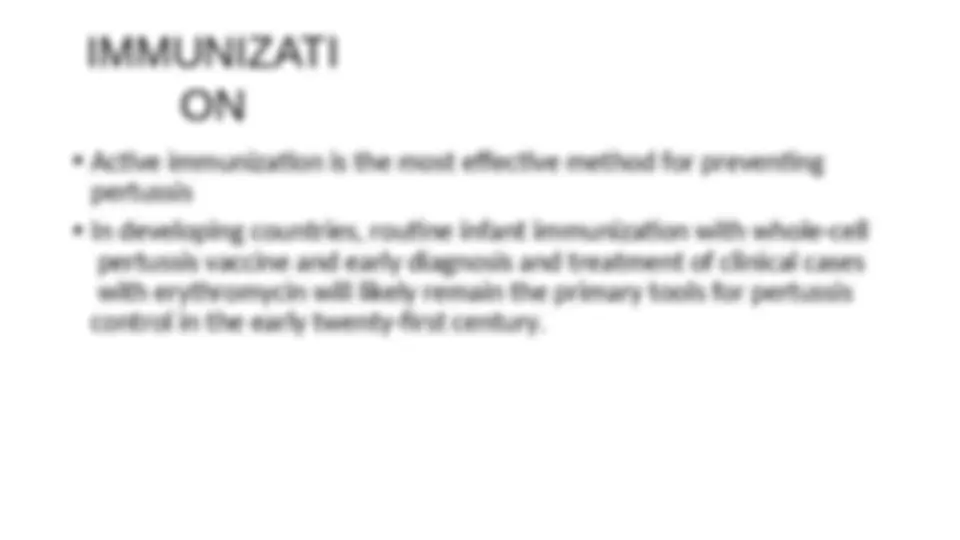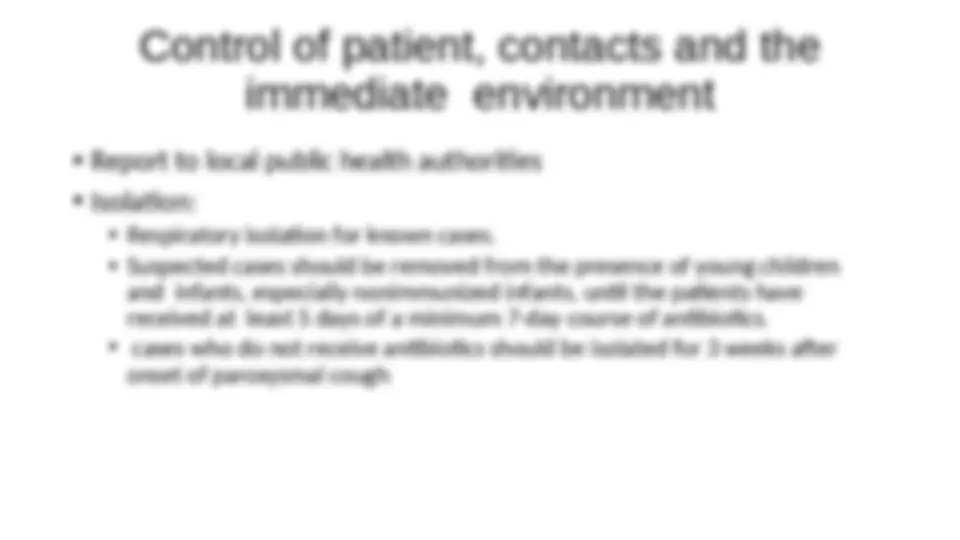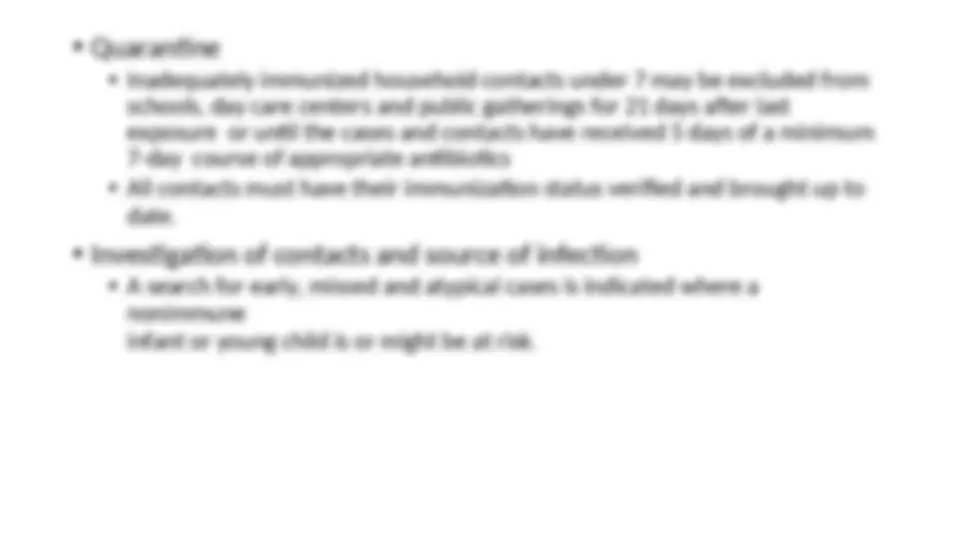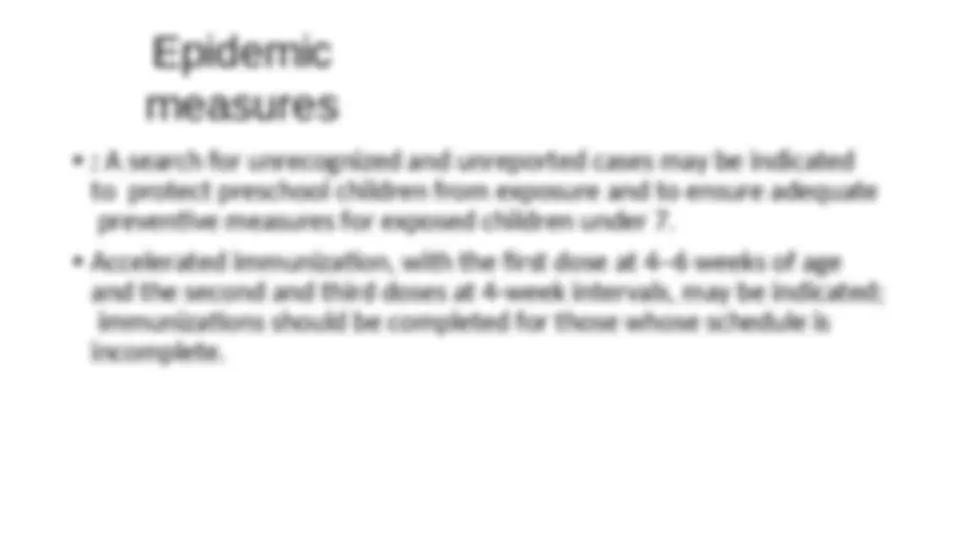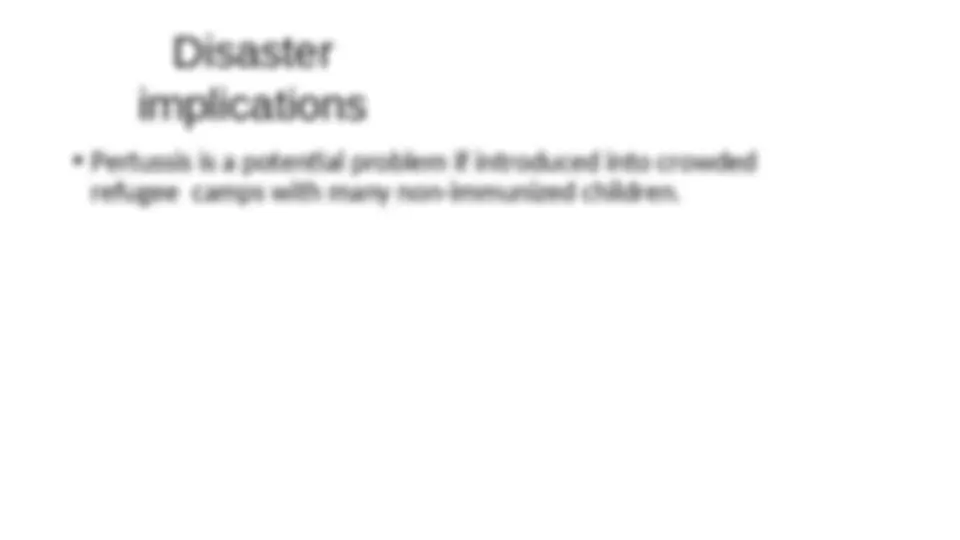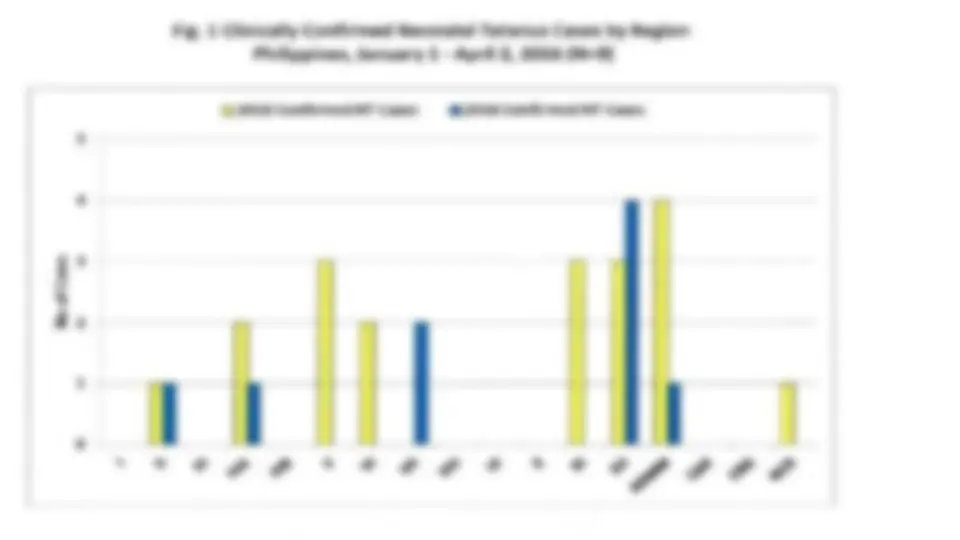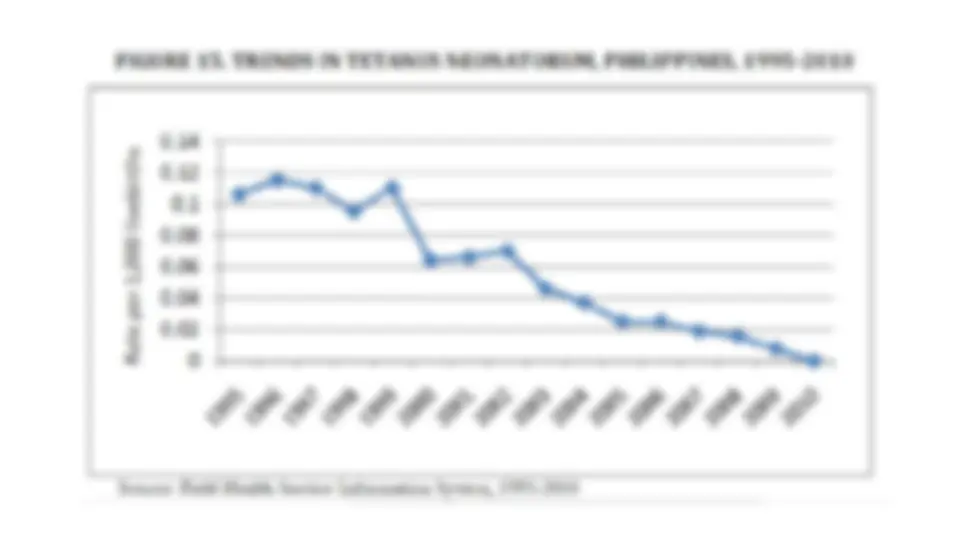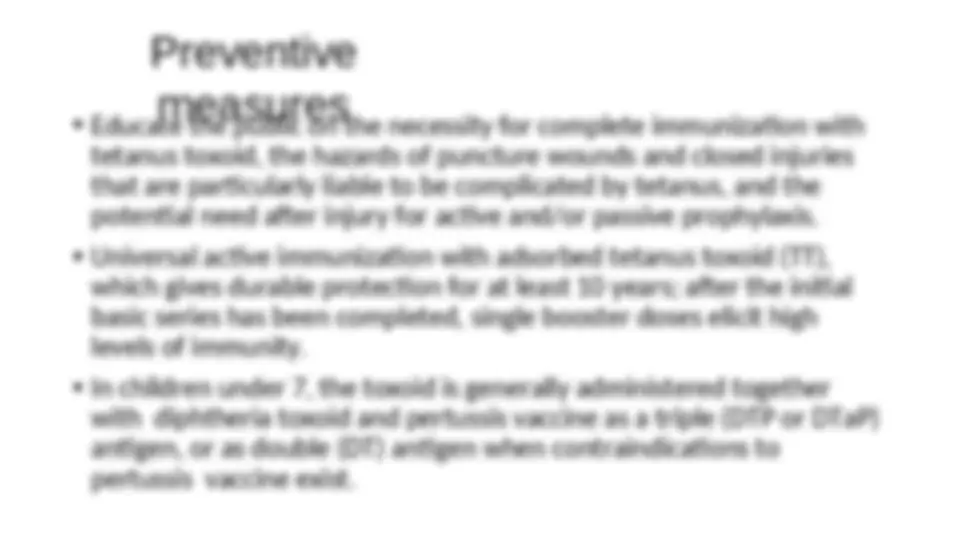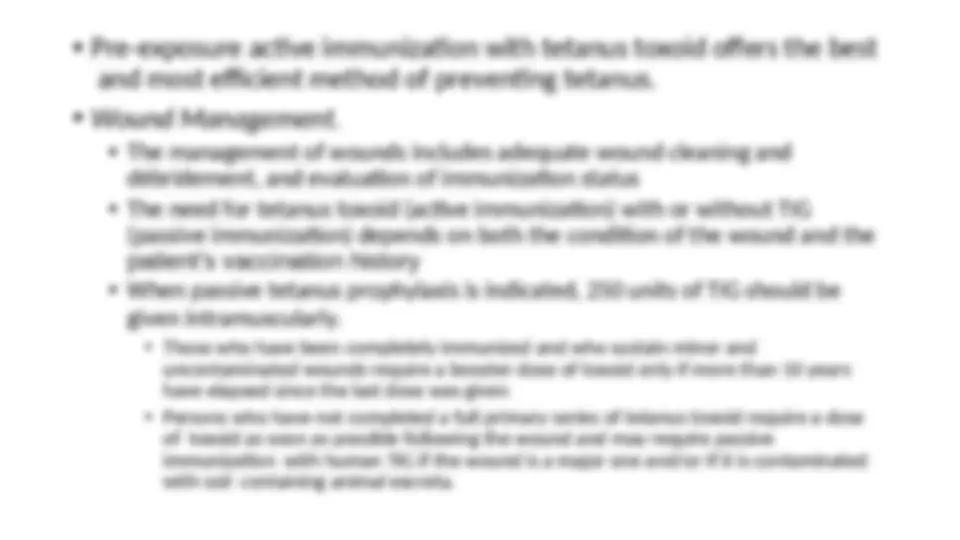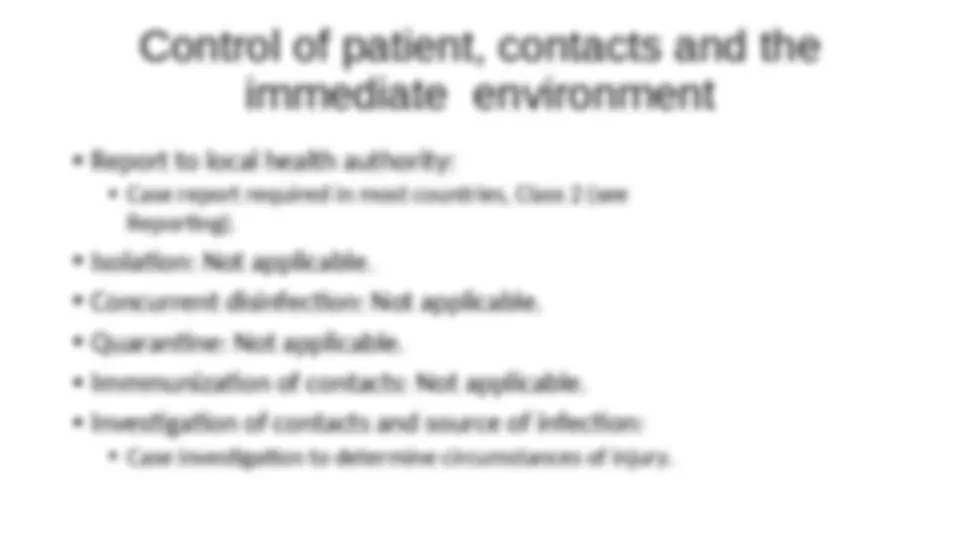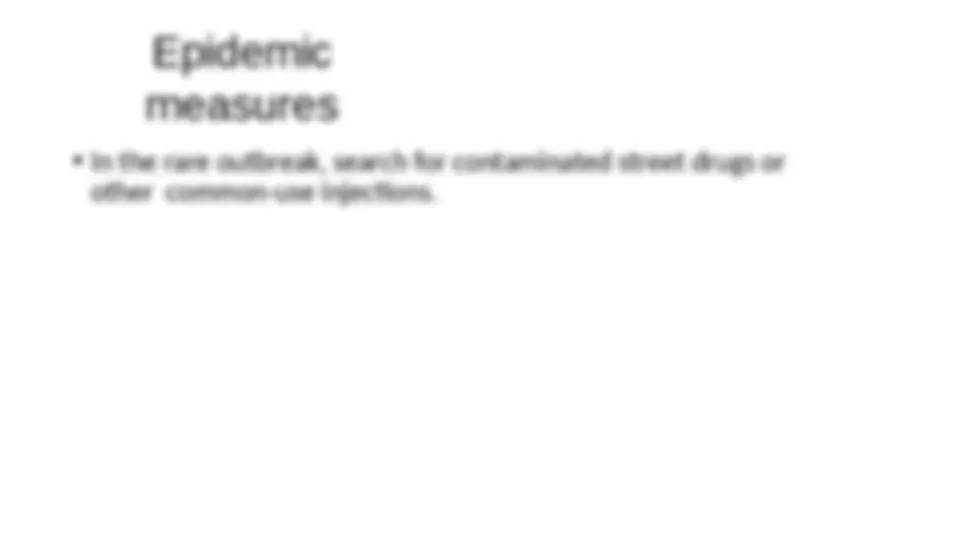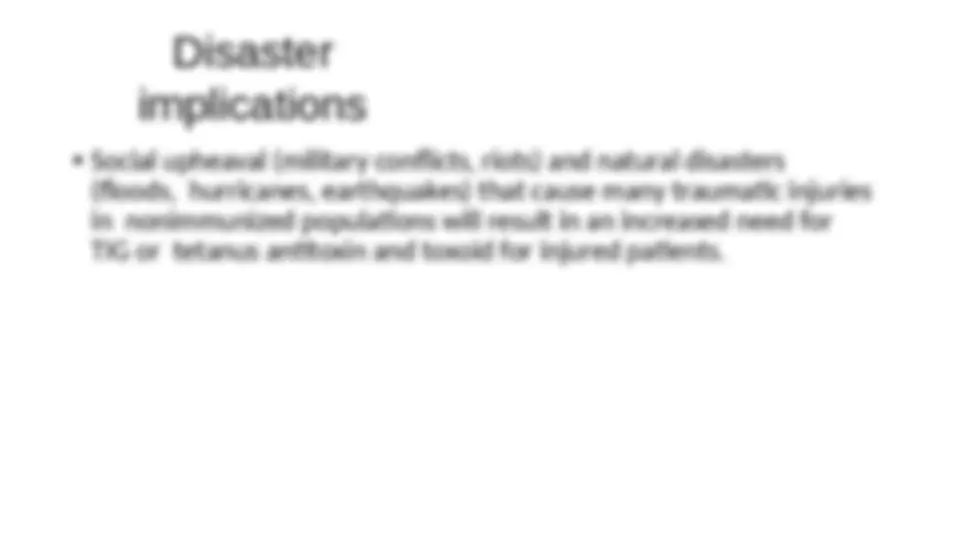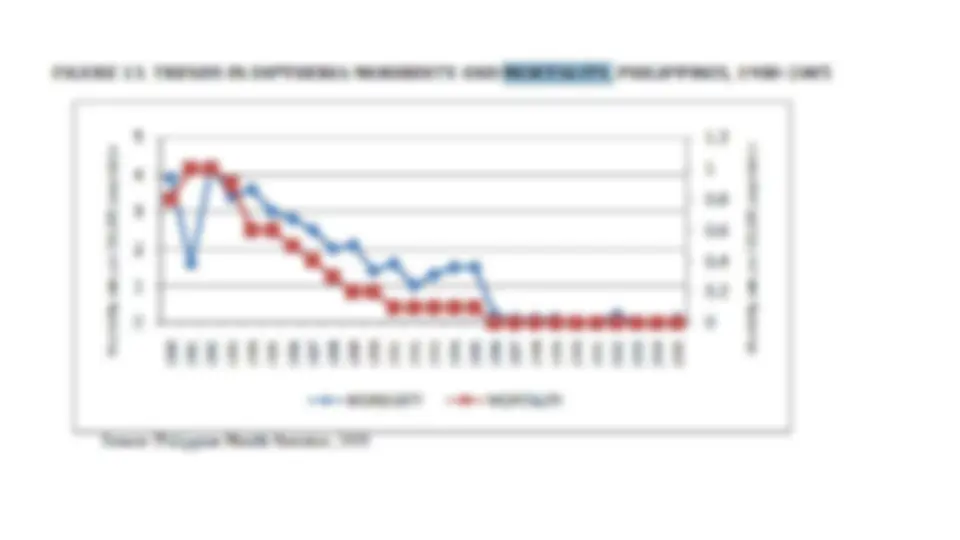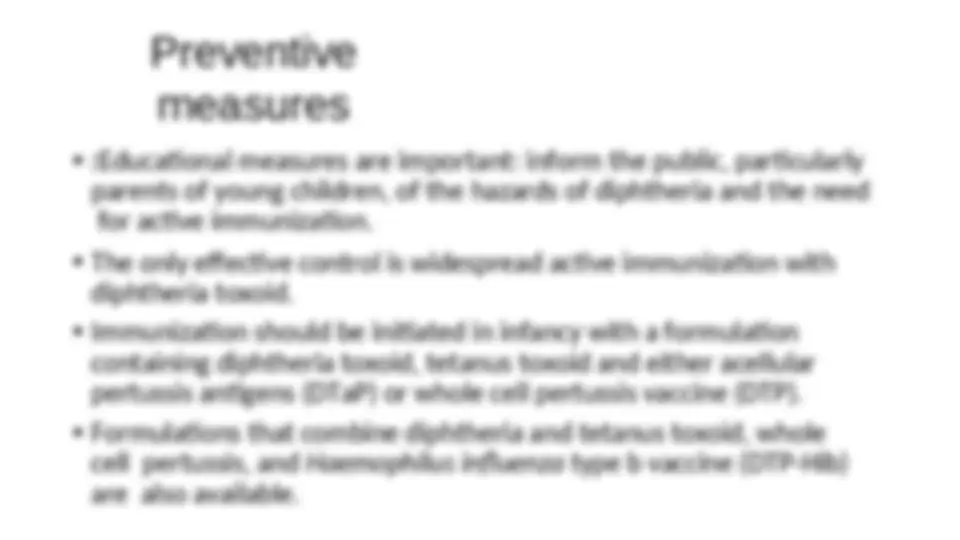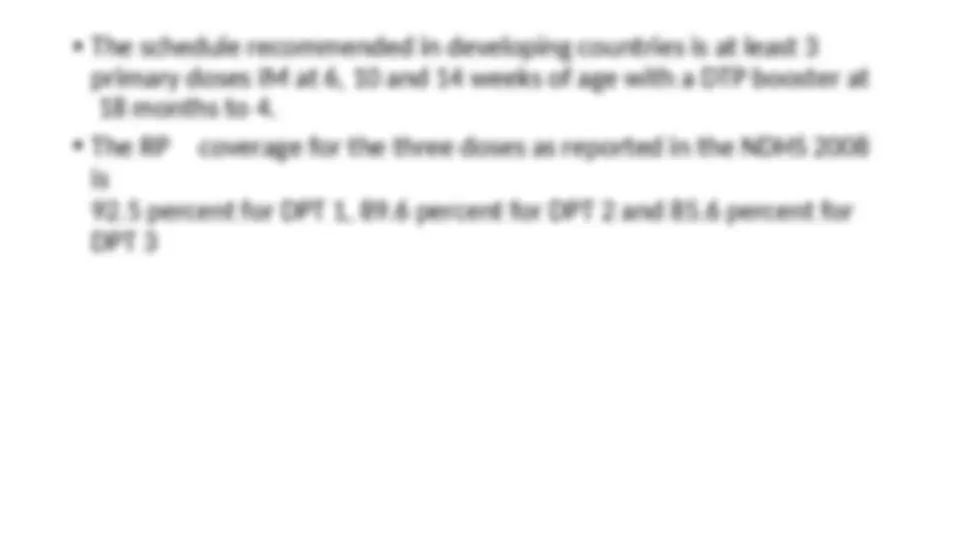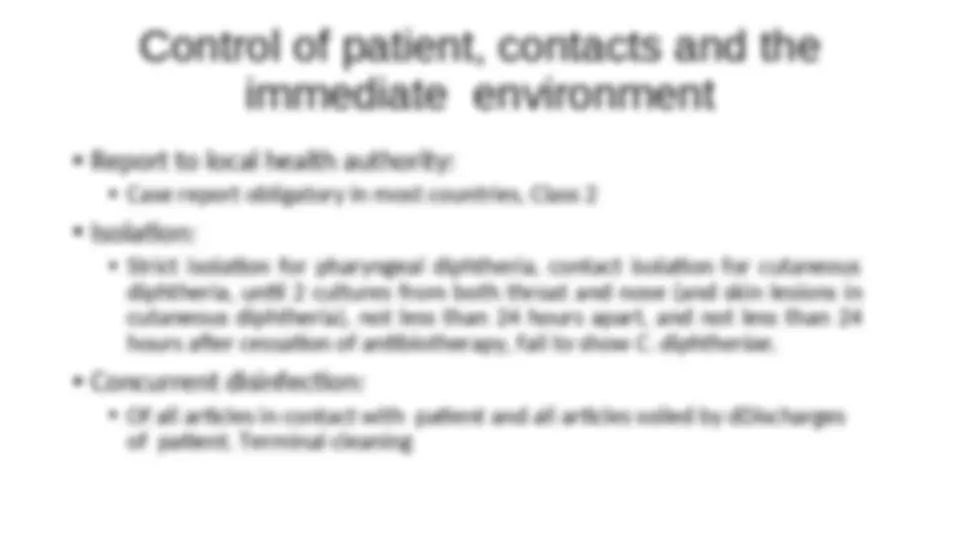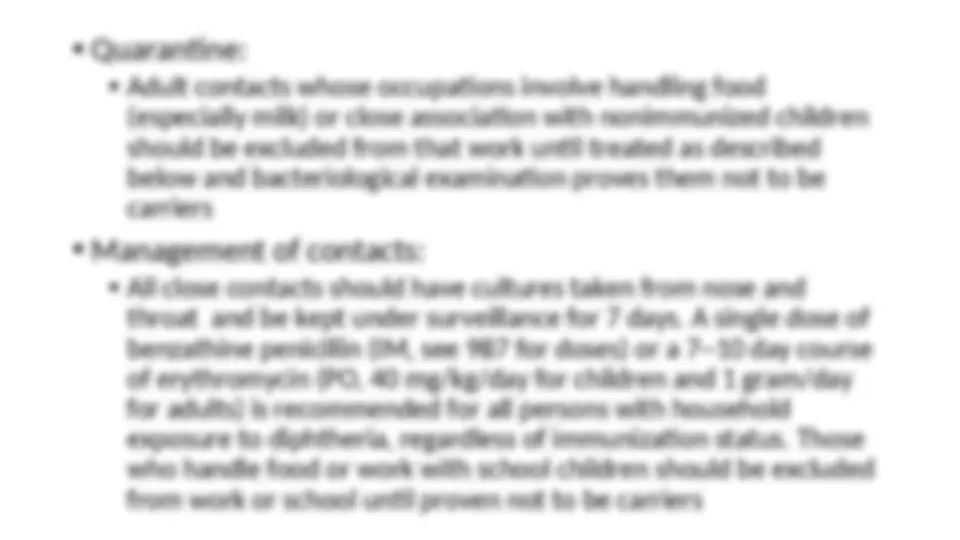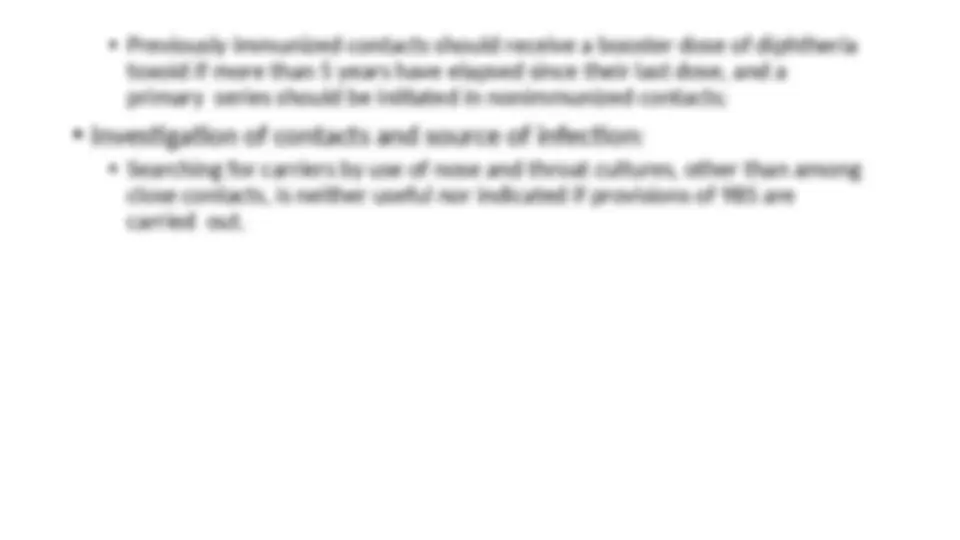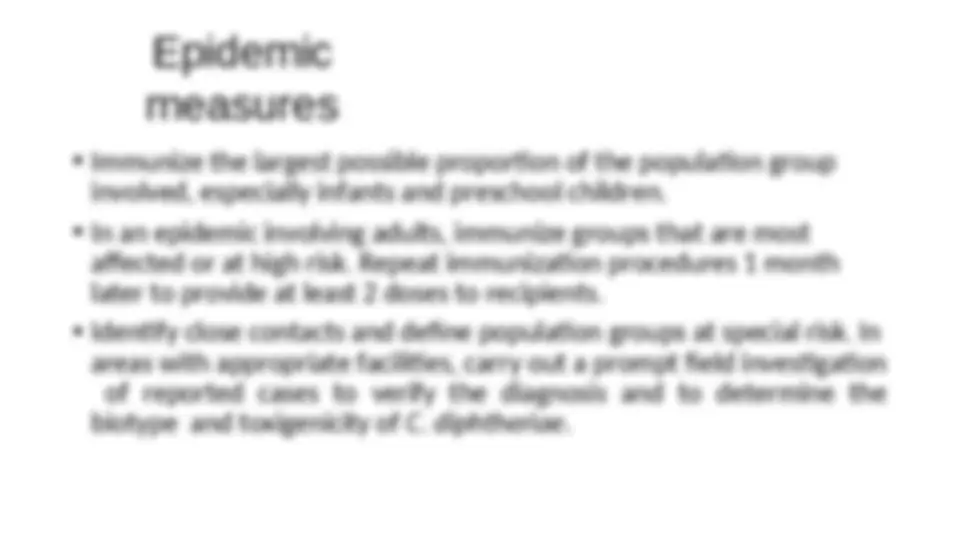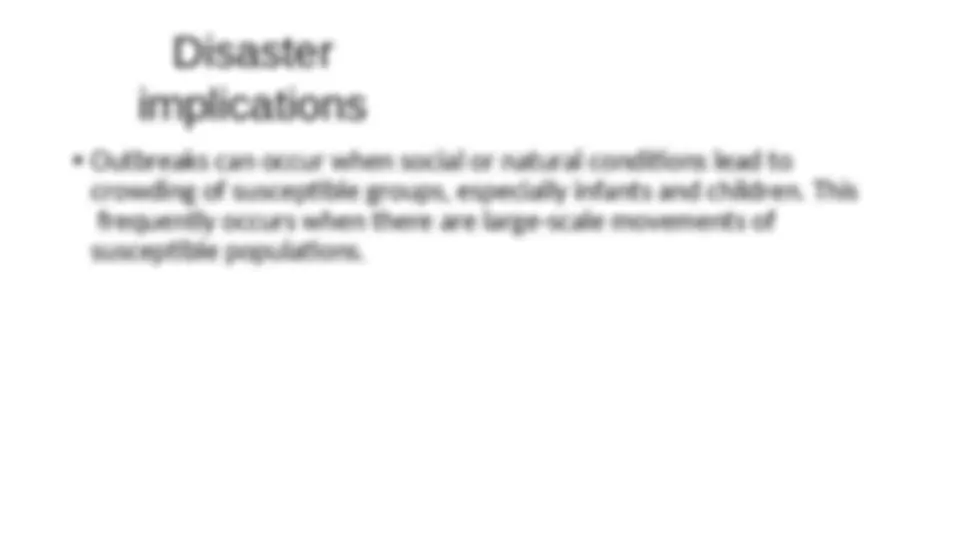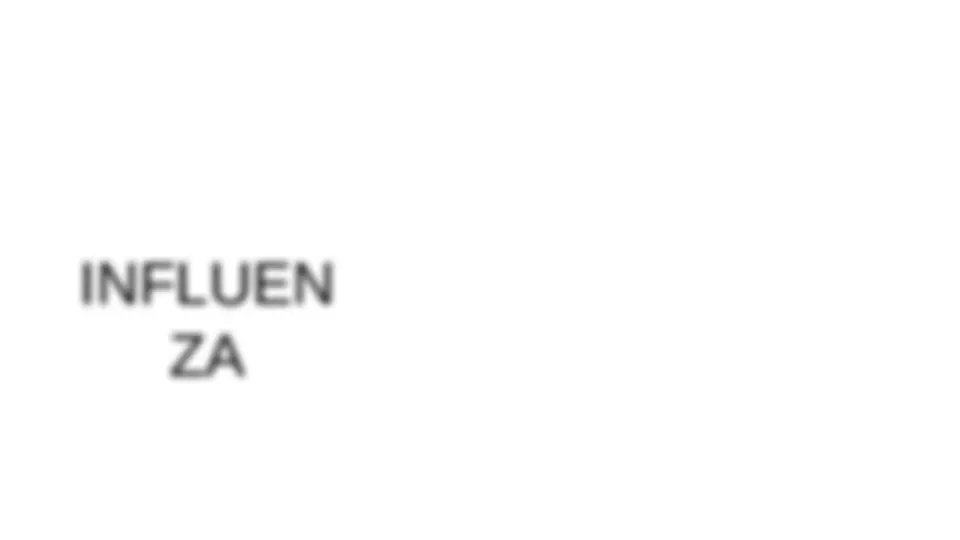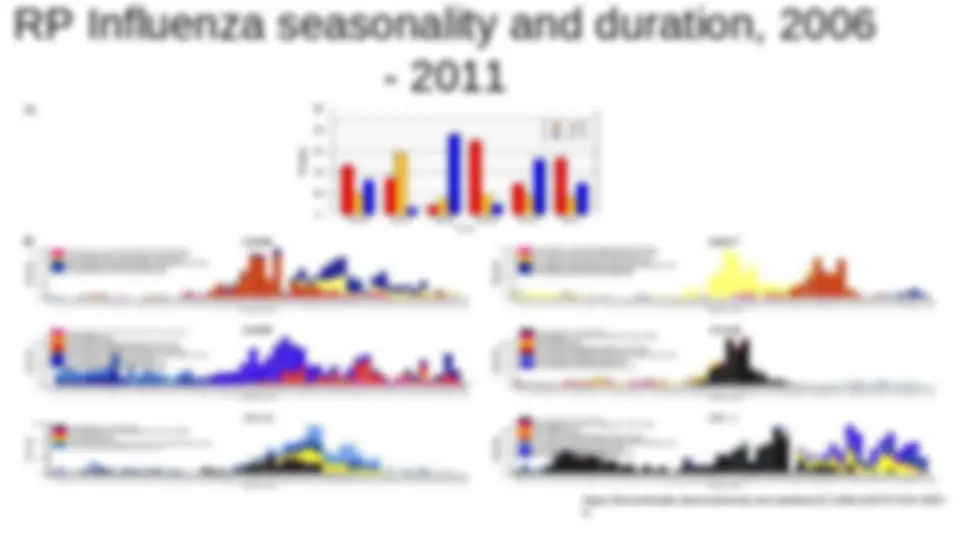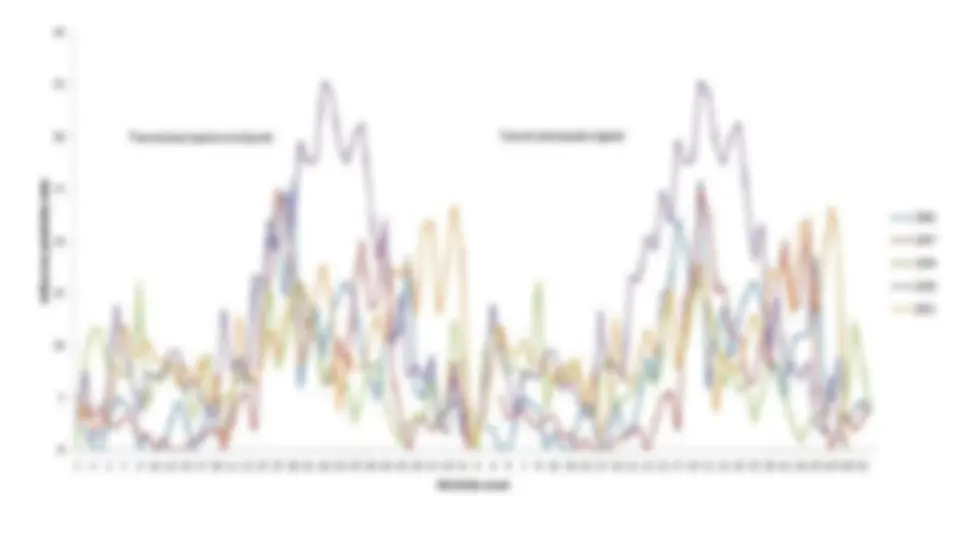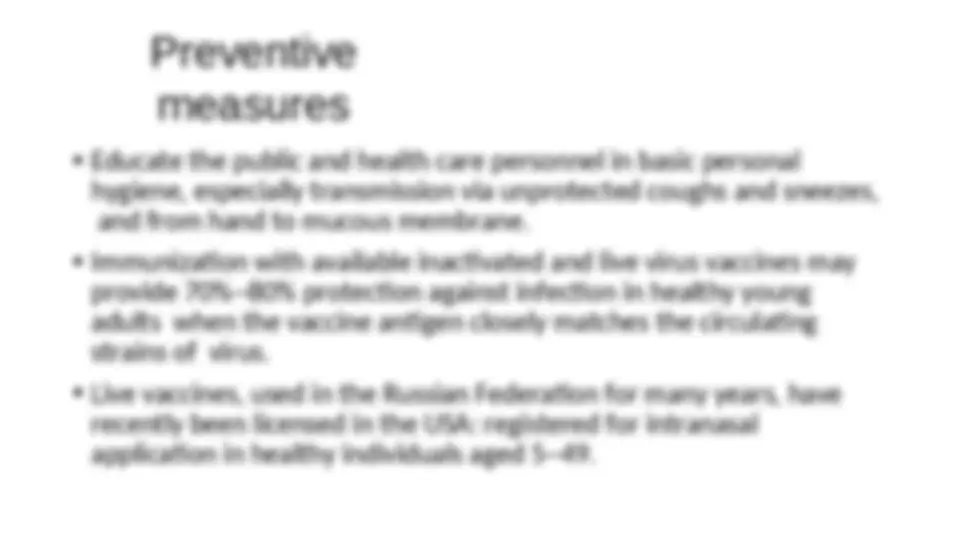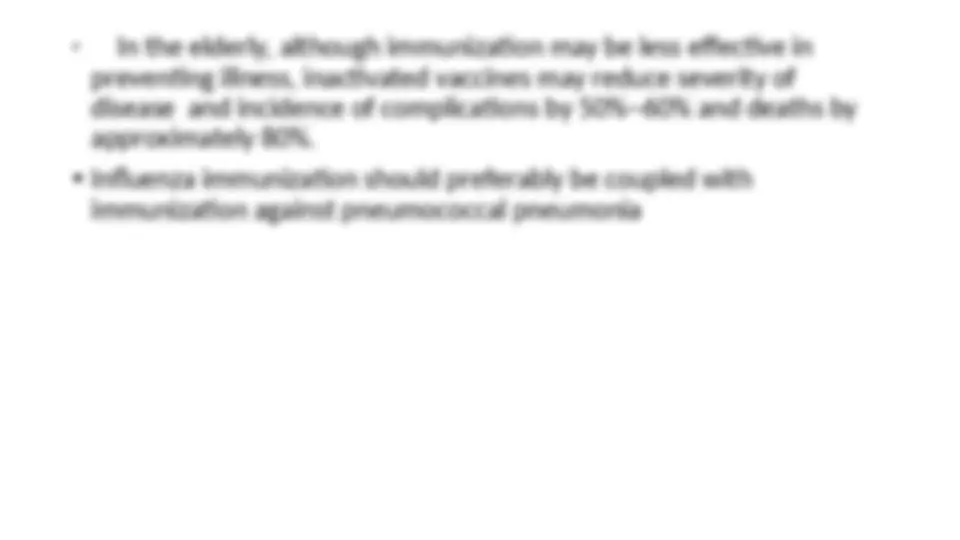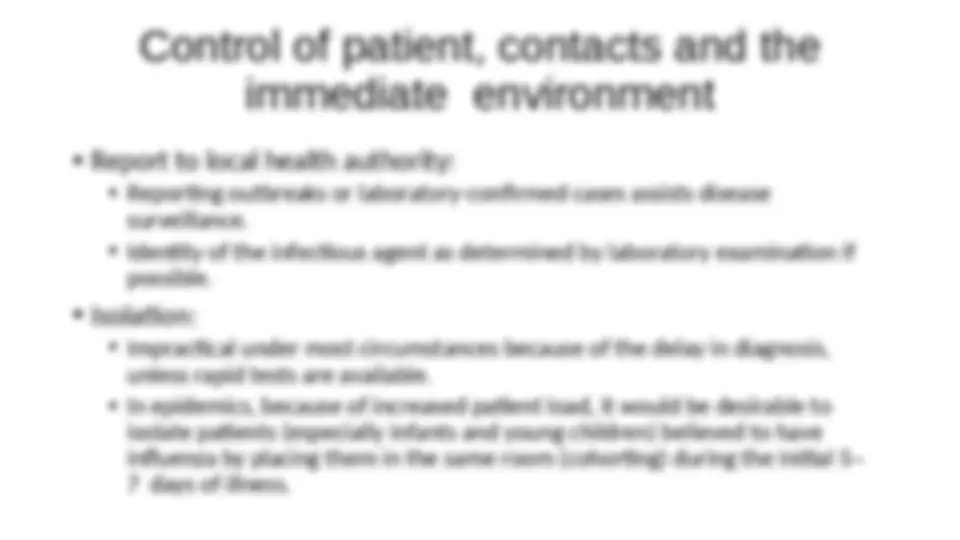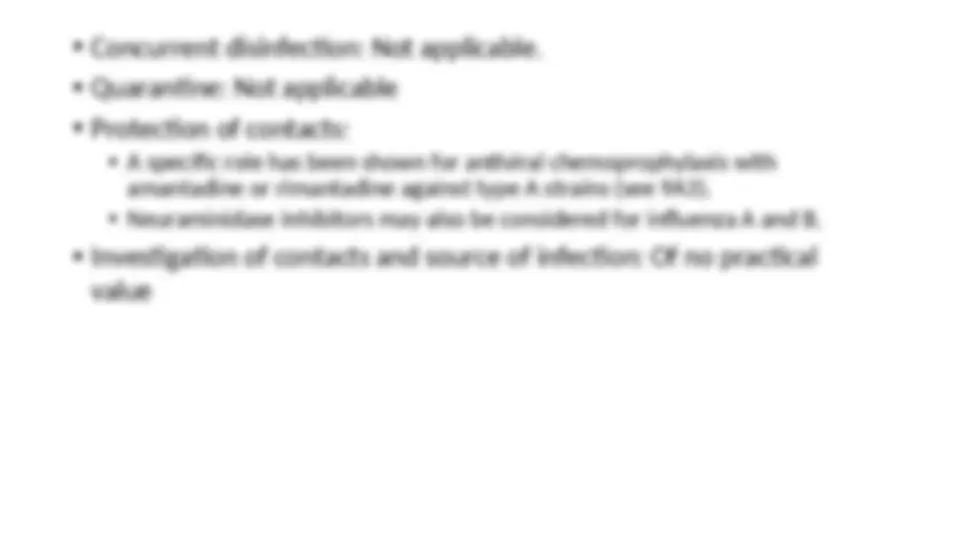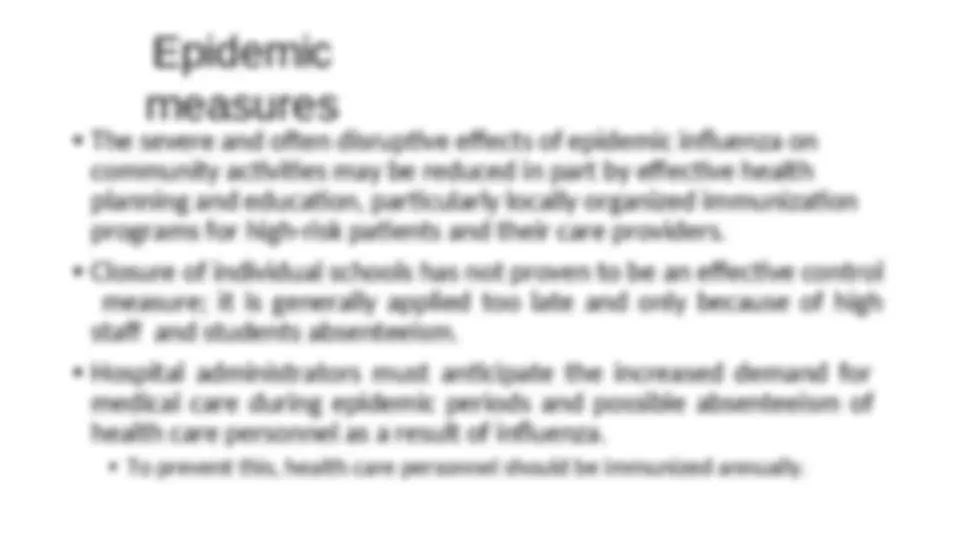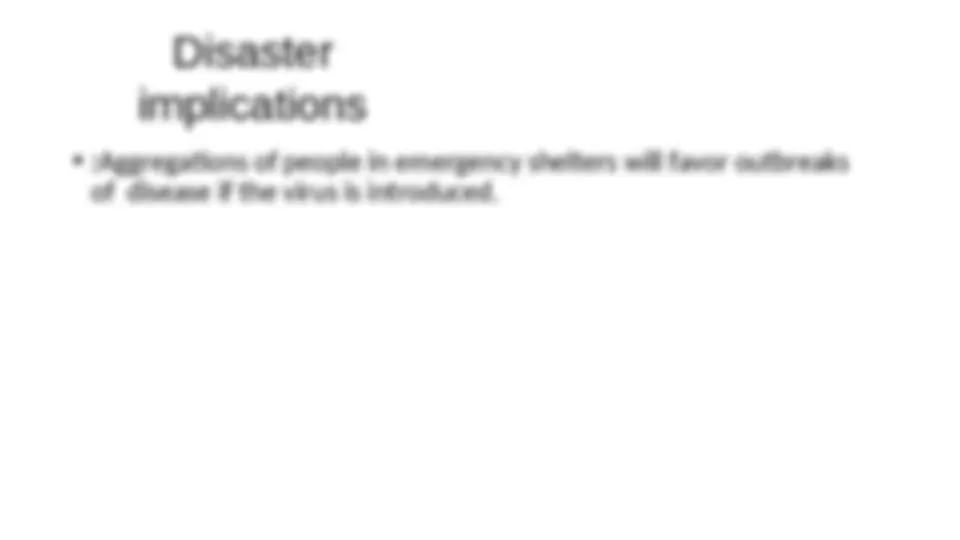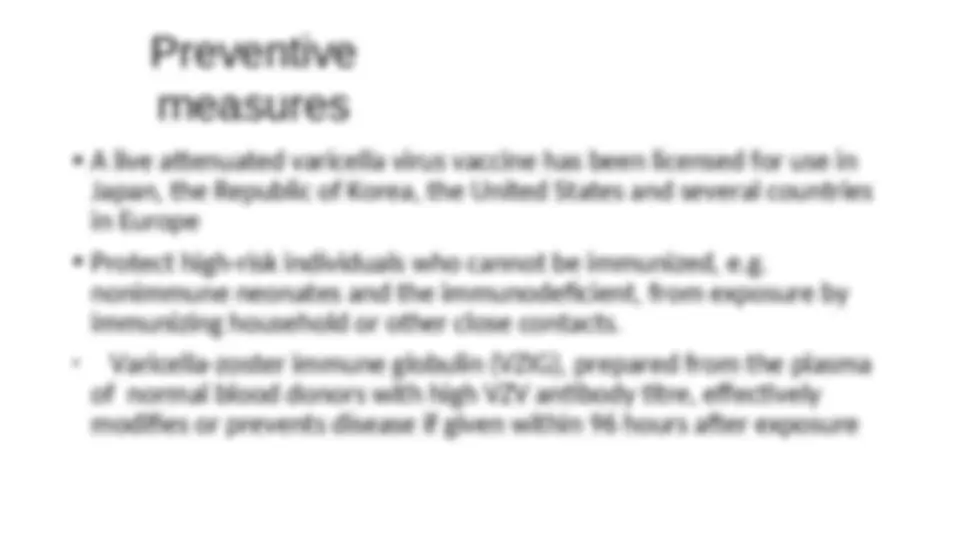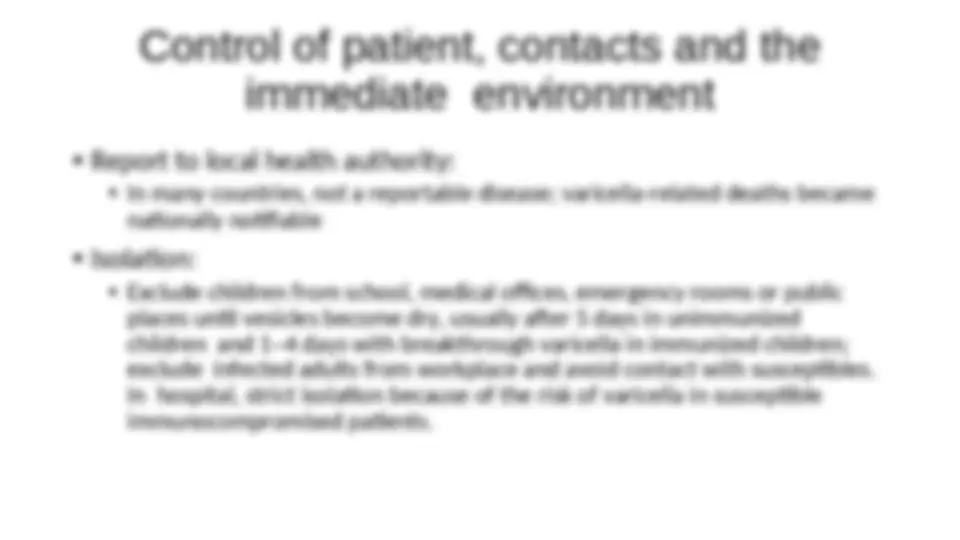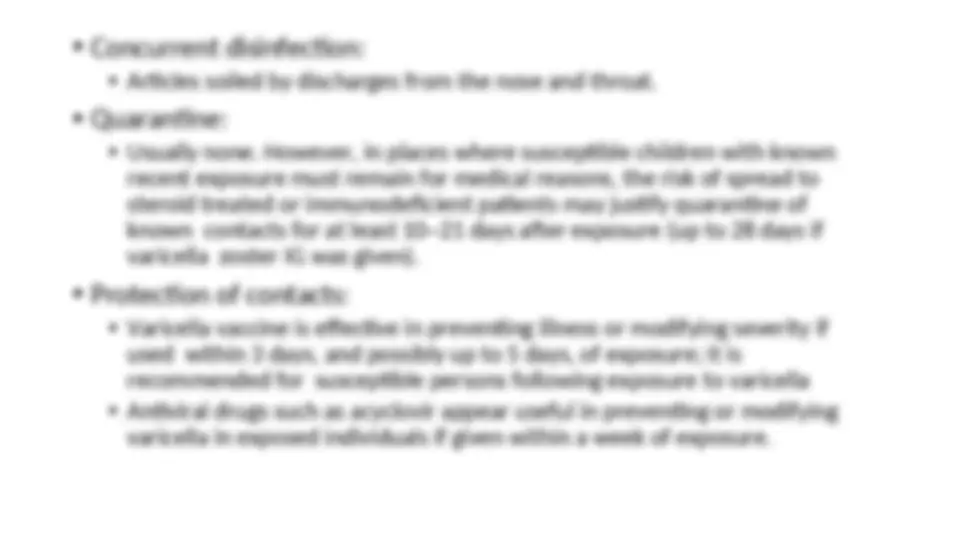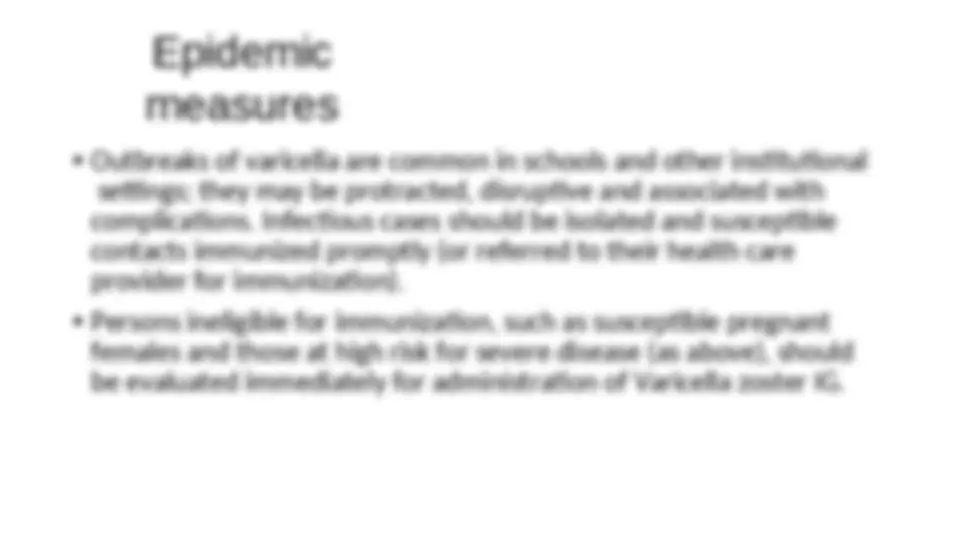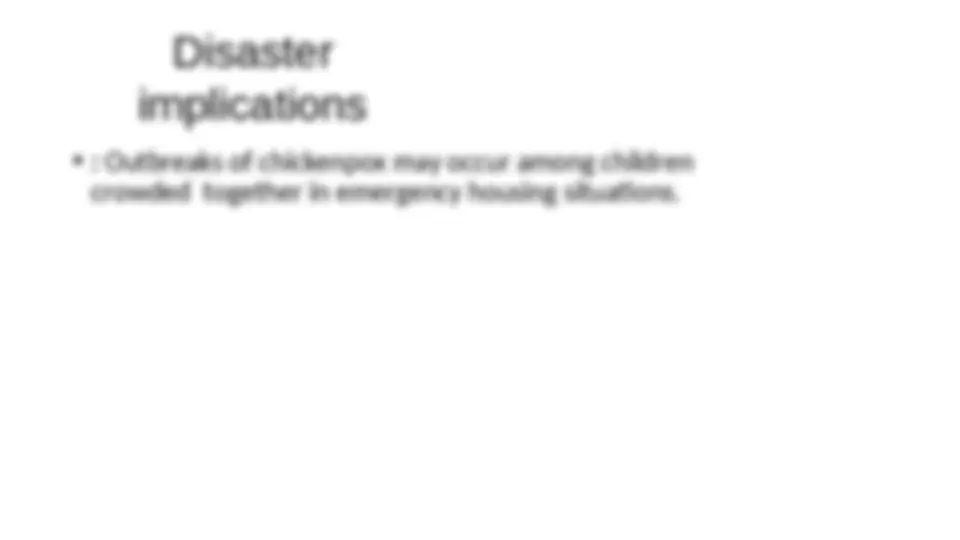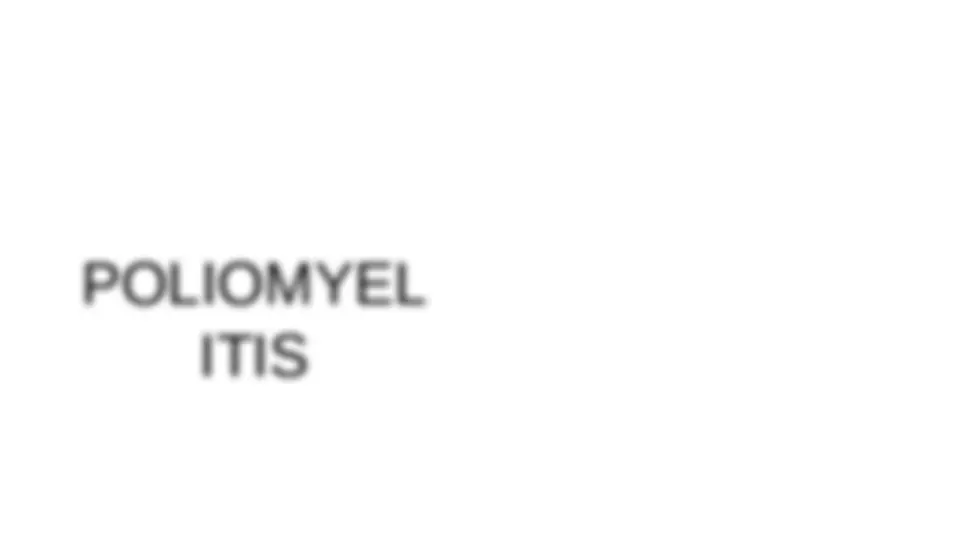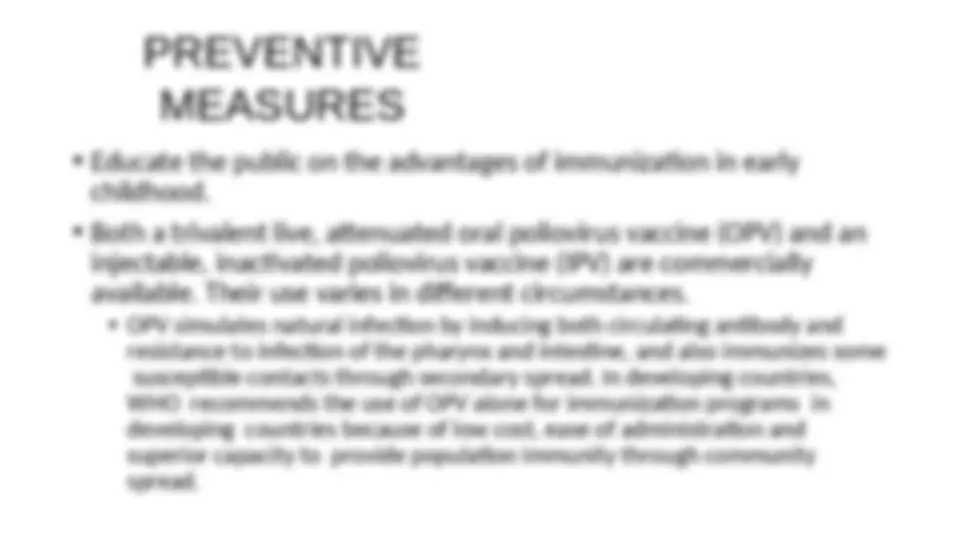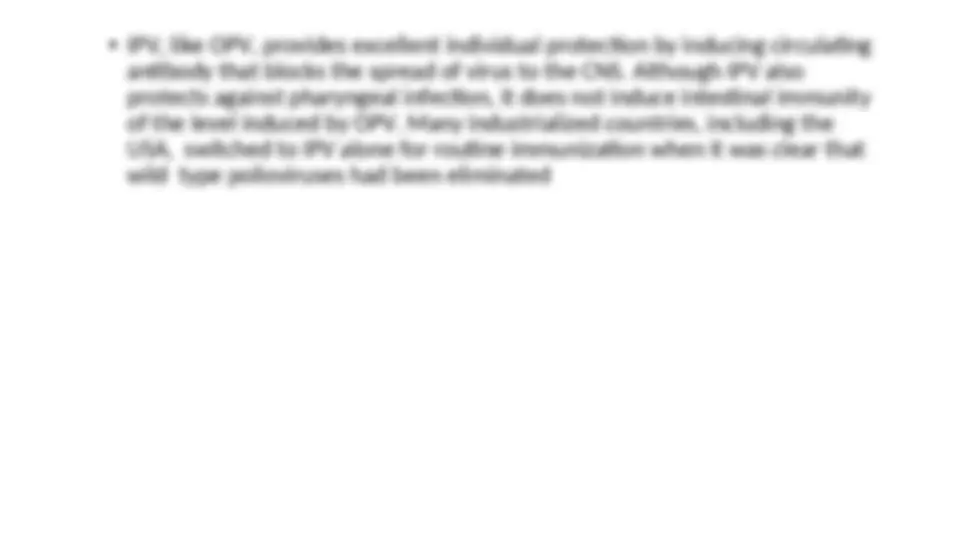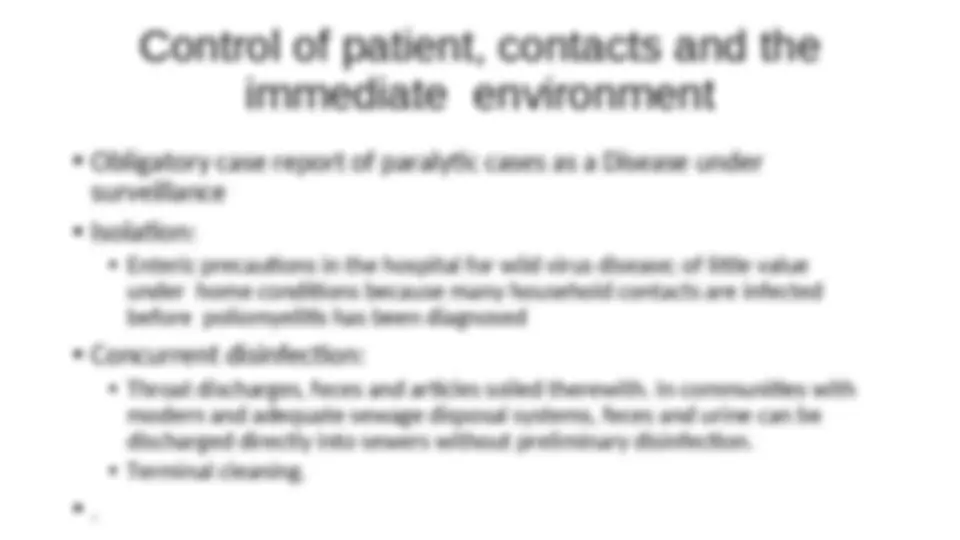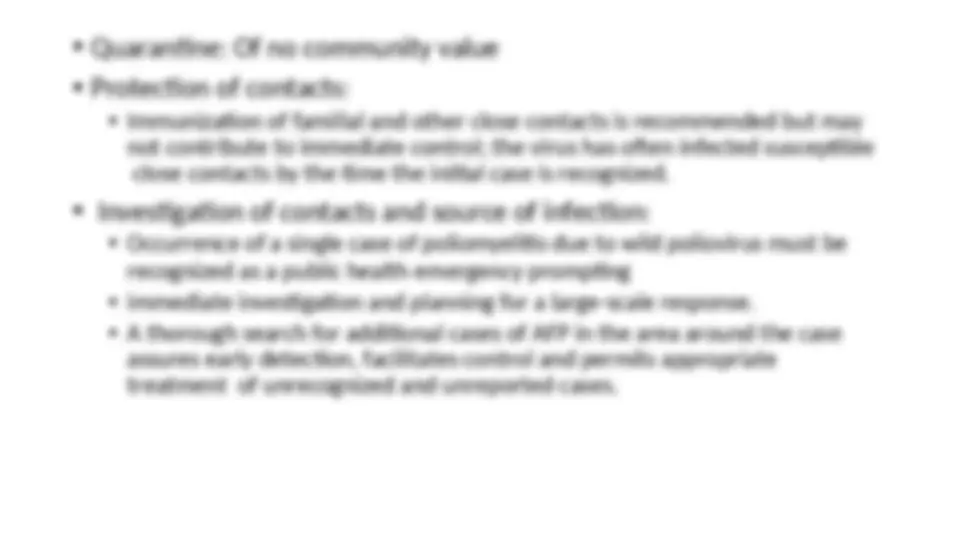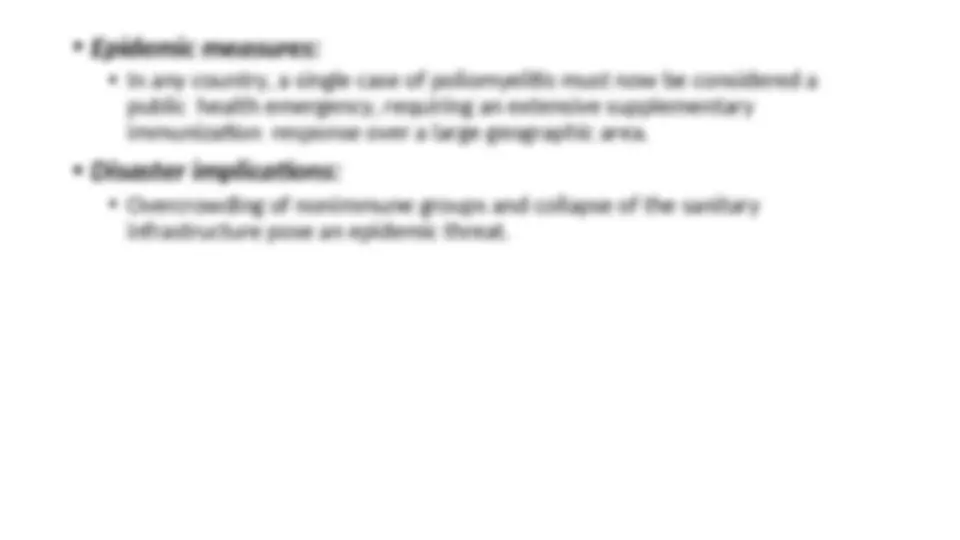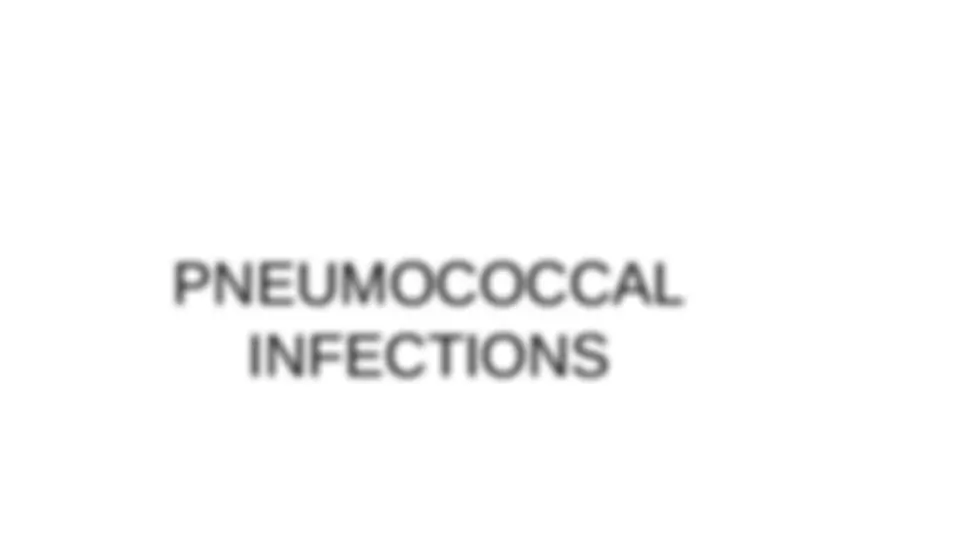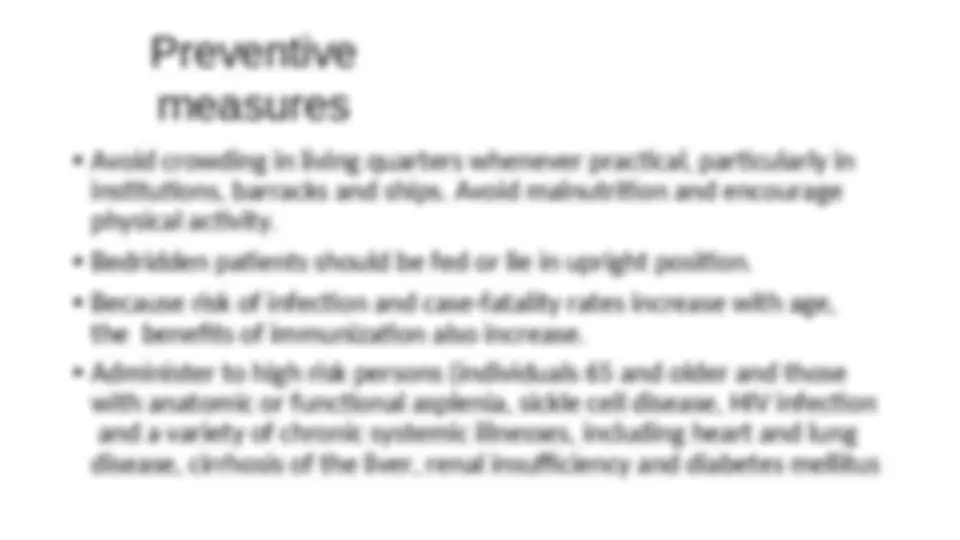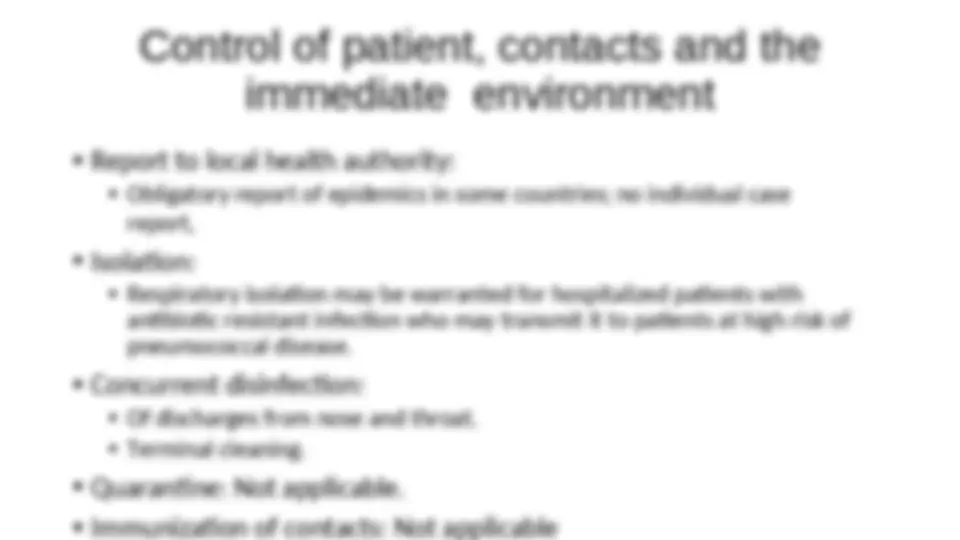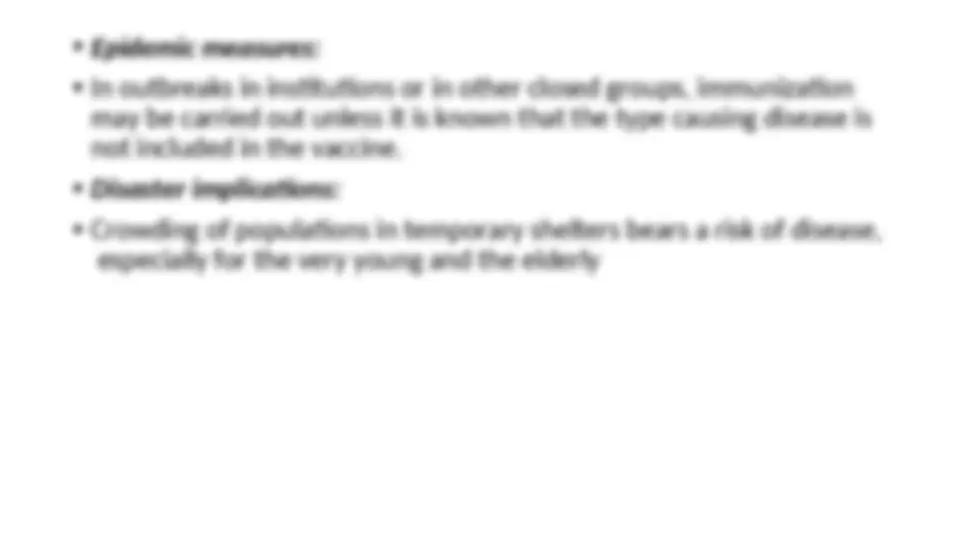Download Vaccine-Preventable Diseases in the Philippines and more Slides Medical Sciences in PDF only on Docsity!
VACCINE
PREVENTAB
LE
DISEASES
NINO ISMAEL AHMED, MD, PHSAE, FPSMID, DRDM, PASCOM 2015
OBJECTI
VES
• COGNITIVE
- (^) Identify the different preventive measures in vaccine-preventable diseases
- (^) AFFECTIVE
- (^) Describe the different preventive measures in vaccine-preventable diseases
- (^) PSYCHOMOTOR
- (^) None
- (^) The Black Death (@200 million died) marked the end of the Middle Age.
- (^) Syphilis ( th century) offered a “post-graduate course” in public health (@5 million died) - (^) Spain when expeditions from West Indies arrived entry point - (^) Naples (1495 AD) exit point - (^) Malignant syphilis common - (^) Mercurial ointment discovered by Abu Bekr Muhammad al-Razi (844 – 926 AD) first line of defense - (^) Guaiac from barks of West Indies trees also favorite - (^) Sexual behaviors were not morally restricted so major efforts were made to try and combat syphilis. - (^) Italy formalized some of the first efforts to control syphilis by registration of brothels and prostitute
(^) 1694: “…smallpox … “The havoc of the plague had been far more rapid…but the plague had visited our shores only once or twice within living memory; and the smallpox was always present , filling the church-yards with corpses, tormenting with constant fears all whom it had not yet stricken, leaving on those whose lives it spared the hideous traces of its power, turning the babe into a changeling at which the mother shuddered, and making the eyes and cheeks of the betrothed maiden objects of horror to the lover. T
OTHER RP
EPIDEMICS
- (^) Cholera
- (^) Beriberi Cholera detention ward of San Lazaro Hospital,
HISTO
RY
- (^) Chinese employed smallpox inoculation (or variolation, as such use of smallpox material was called) as early as 1000 CE. - (^) in Africa and Turkey as well, before it spread to Europe and the Americas.
- (^) Jenner’s innovations, begun with his successful 1796 use of cowpox material to create immunity to smallpox, quickly made the practice widespread. - (^) His method underwent medical and technological changes over the next 200 years, and eventually resulted in the eradication of smallpox.
- (^) Louis Pasteur’s 1885 rabies vaccine was the next to make an impact on human disease.
R.P. Vaccine
history
(^) Dr. Francisco de Balmis from Spain was ordered by King Carlos IV on April 15, 1805 to vaccinate Filipinos with small pox (^) it was first administered to the Governor-General’s very own children.
MEASL ES
Preventive
measures
- (^) Public education
- (^) Immunization
Vaccine
Recommendations
• WHO
- (^) recommends measles immunization of all children at 9 months with another opportunity for measles immunization, generally through SIAs.
- (^) Children
- (^) CDC recommends routine childhood immunization for MMR vaccine starting with the first dose at 12 through 15 months of age, and the second dose at 4 through 6 years of age or at least 28 days following the first dose.
- (^) Students at post-high school educational institutions
- (^) Students at post-high school educational institutions without evidence of measles immunity need two doses of MMR vaccine, with the second dose administered no earlier than 28 days after the first dose.
- (^) People exposed to measles who cannot readily show that they have evidence of immunity against measles should be offered post- exposure prophylaxis (PEP) or be excluded from the setting (school, hospital, childcare). MMR vaccine, if administered within 72 hours of initial measles exposure, or immunoglobulin (IG), if administered within six days of exposure, may provide some protection or modify the clinical course of disease.
Isolatio
n
- (^) Isolated for four days after they develop a rash.
- (^) Healthcare providers should follow respiratory etiquette and airborne precautions in healthcare settings. - (^) should all observe airborne precautions in caring for patients with measles. The preferred placement for patients who require airborne precautions is in a single-patient airborne infection isolation room (AIIR).
Epidemic
measures
- (^) Prompt reporting (within 24 hours) of suspected cases and comprehensive immunization programs for all susceptibles
- (^) In institutional outbreaks, new admissions should receive vaccine or IG.
- (^) In many developing countries, measles has a relatively high case- fatality rate. If vaccine is available, prompt use at the beginning of an epidemic is essential to limit spread; if vaccine supply is limited, priority should be given to young children for whom the risk is greatest.
Disaster
implications
- (^) Introduction of measles into refugee populations with a high proportion of susceptibles can result in devastating epidemics with high fatality rates. Providing measles vaccine to displaced persons living in camp settings within a week of entry is a public health priority

